RARE! WWII 1944 U.S. 5th Air Force New Guinea & Admiralty Islands Campaign Combat Flight Navigation Map (Combat Marked)
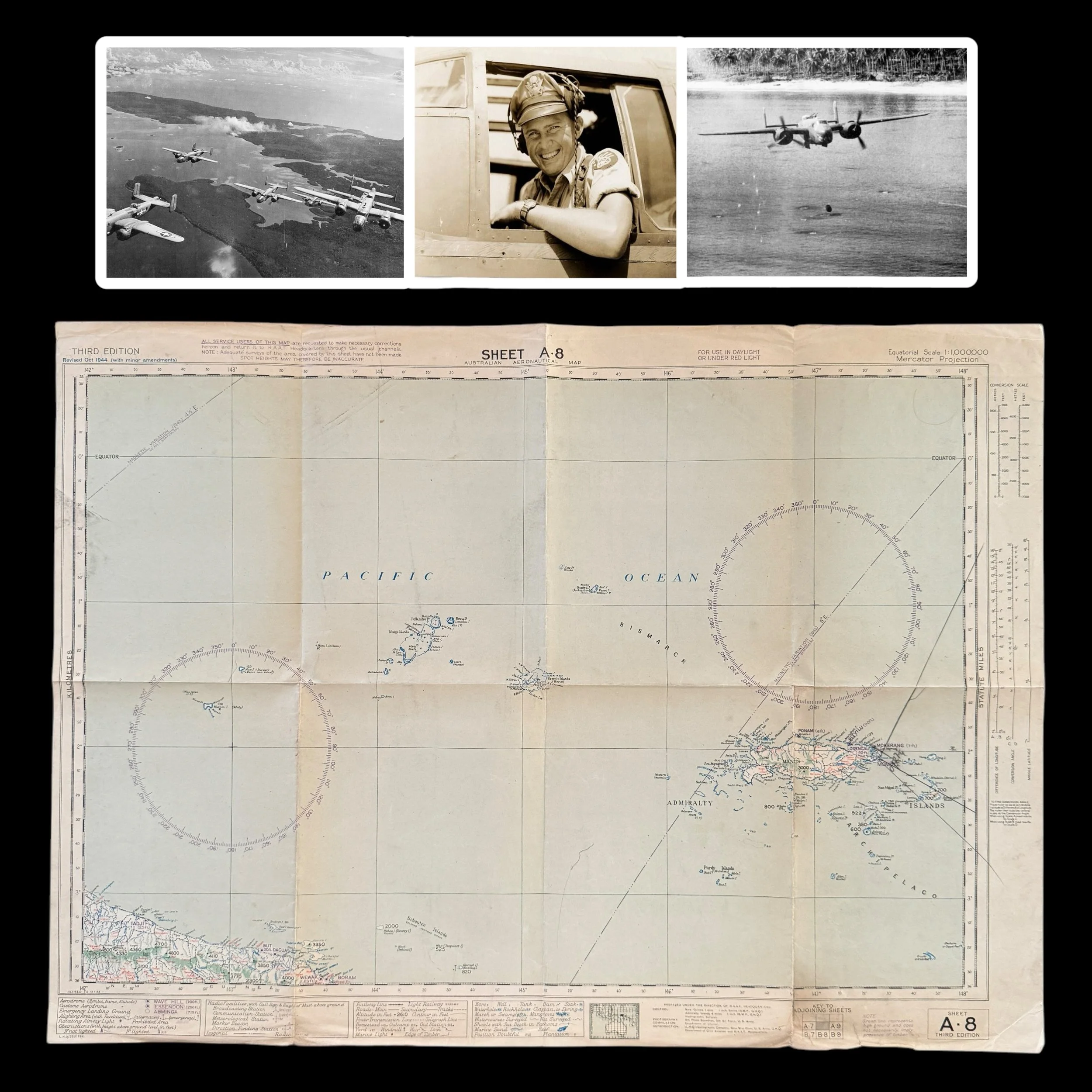
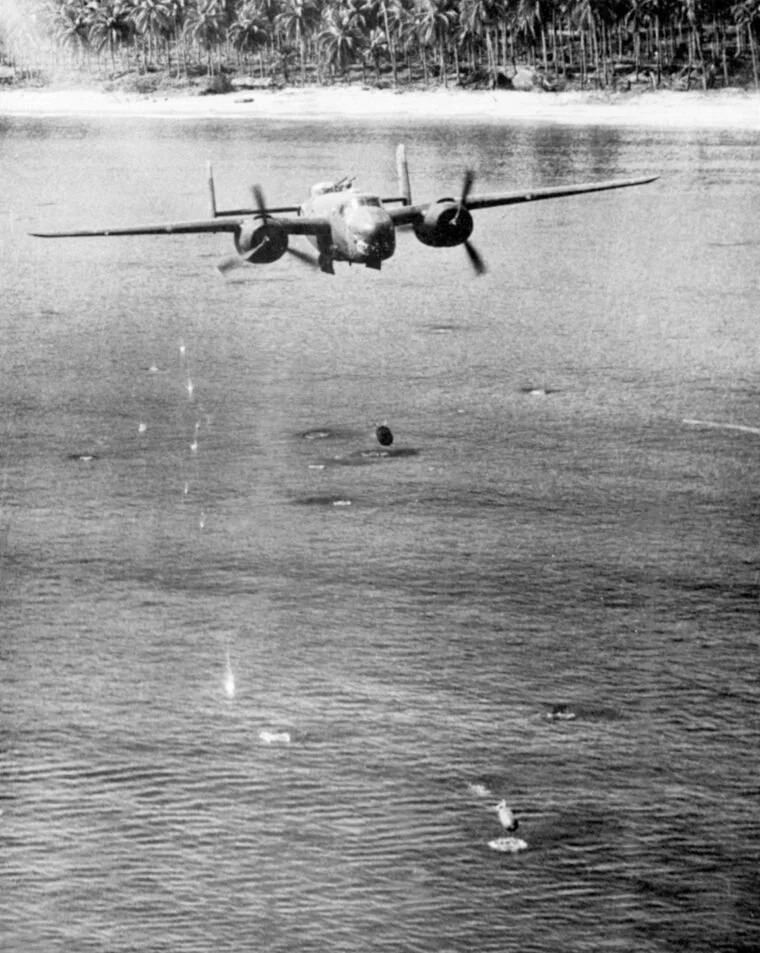
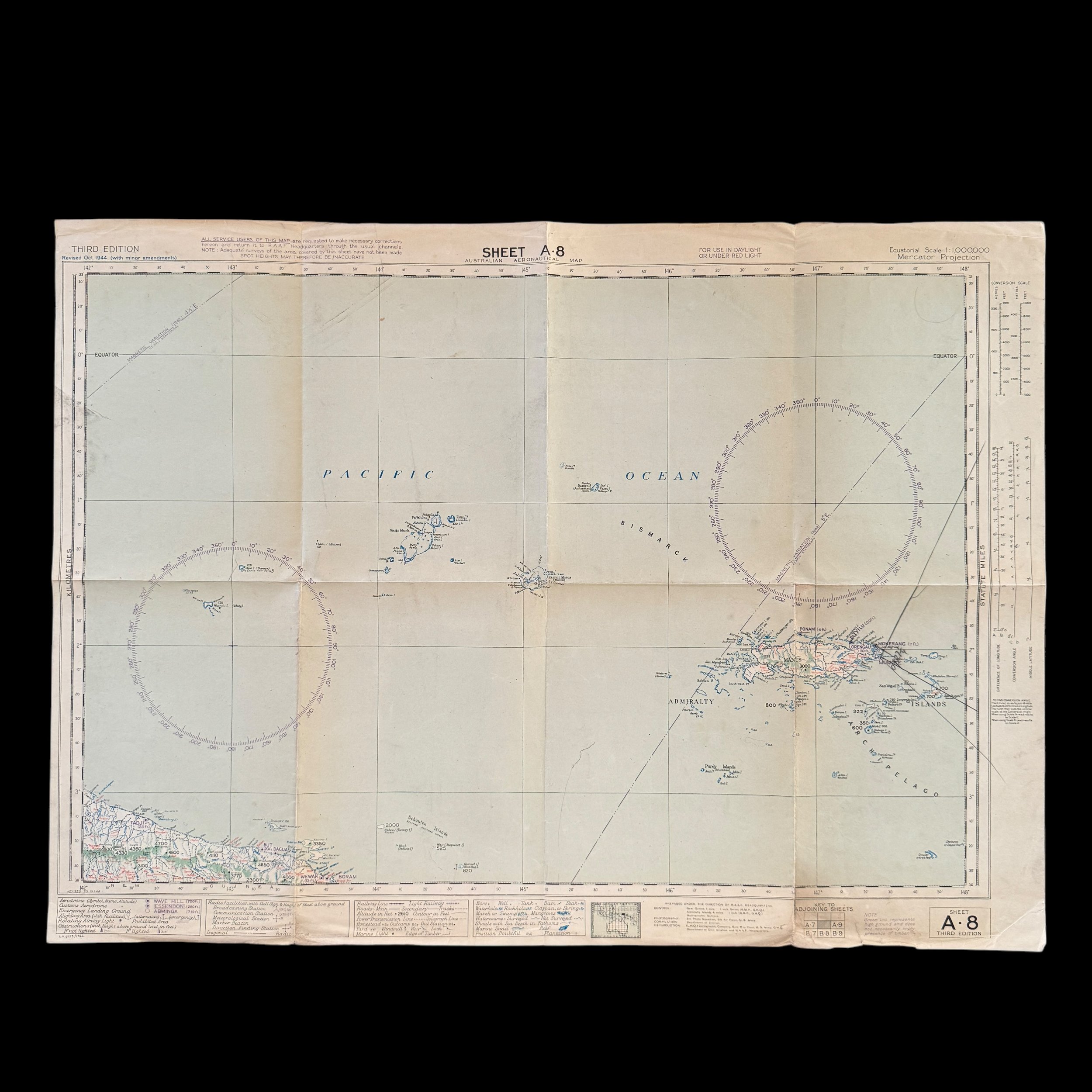
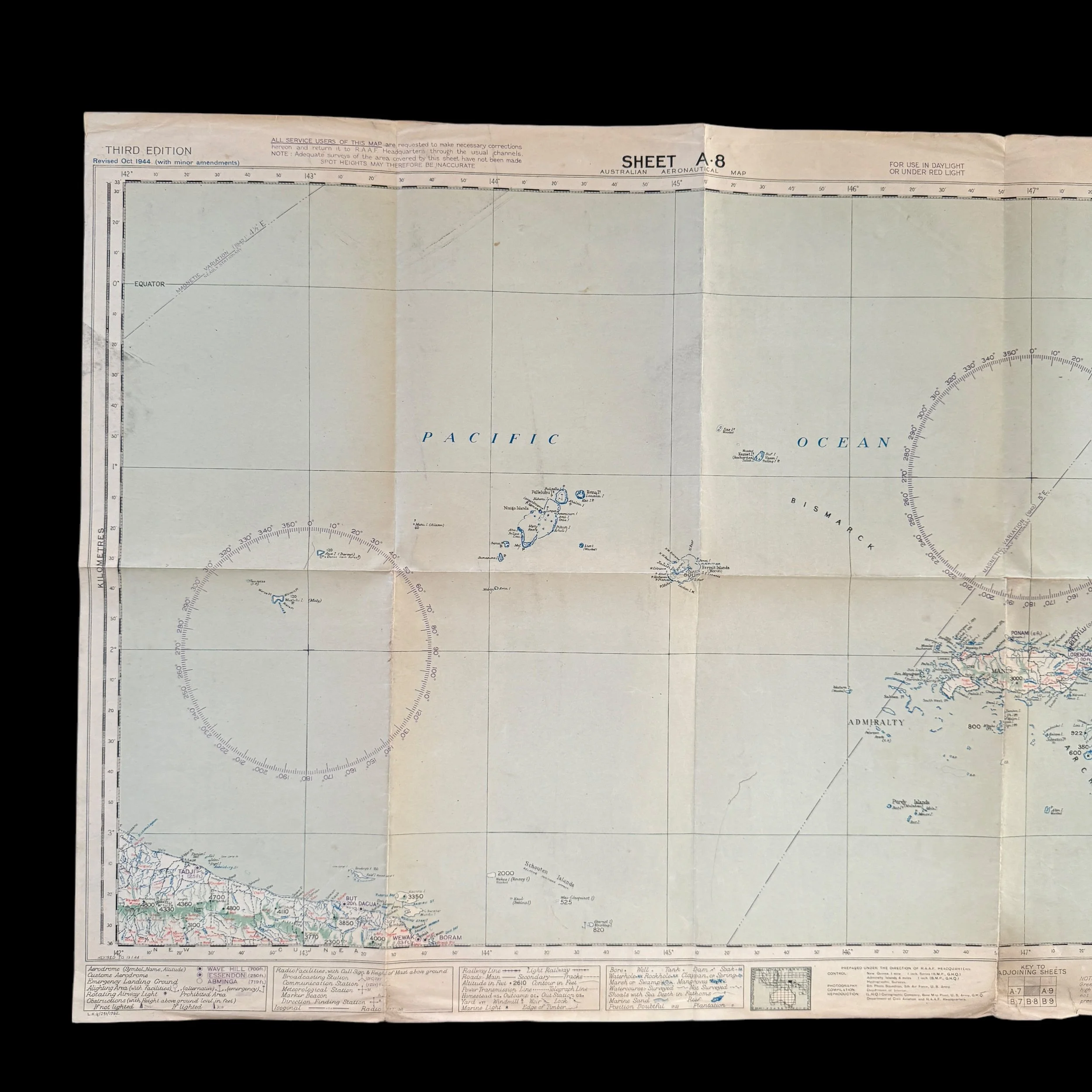

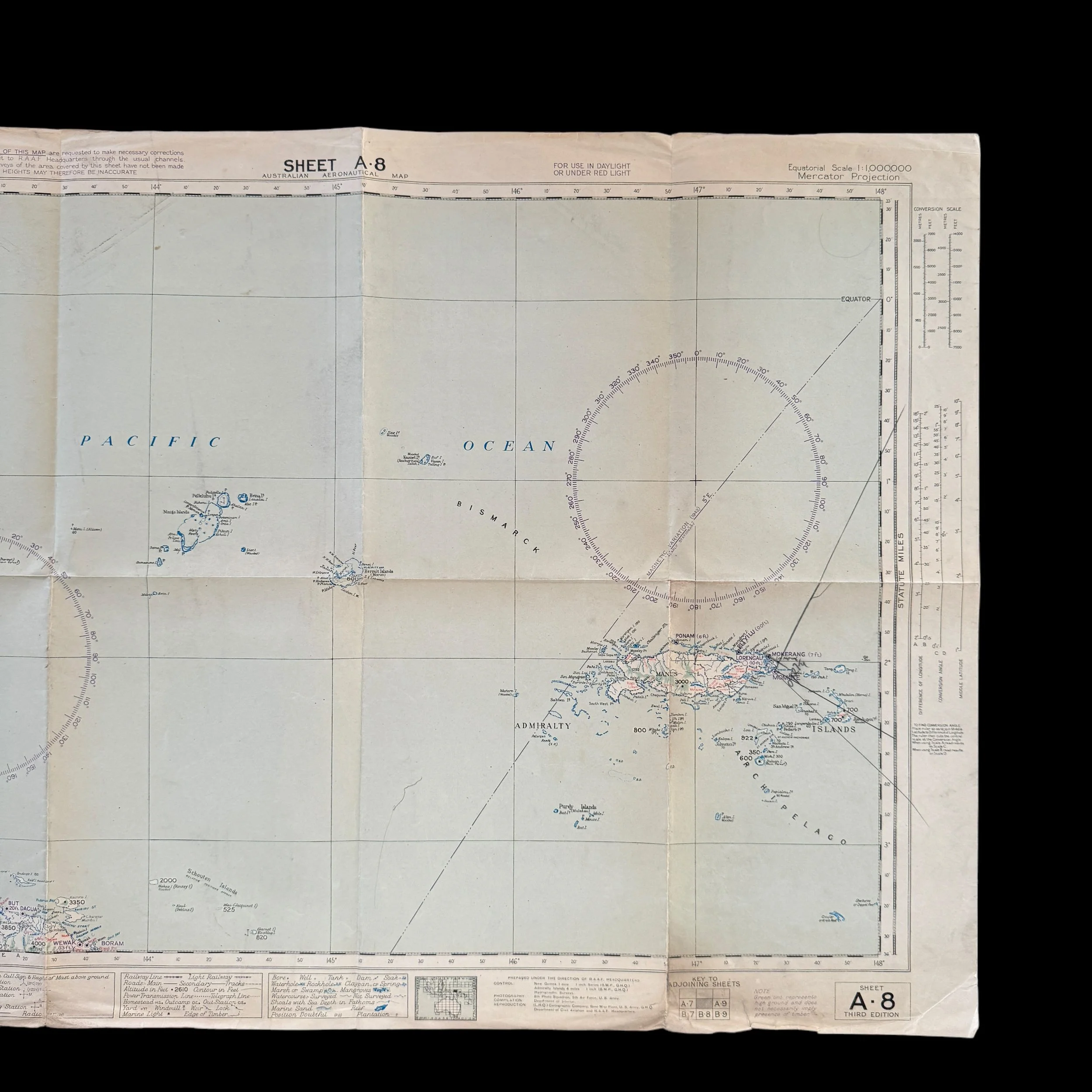
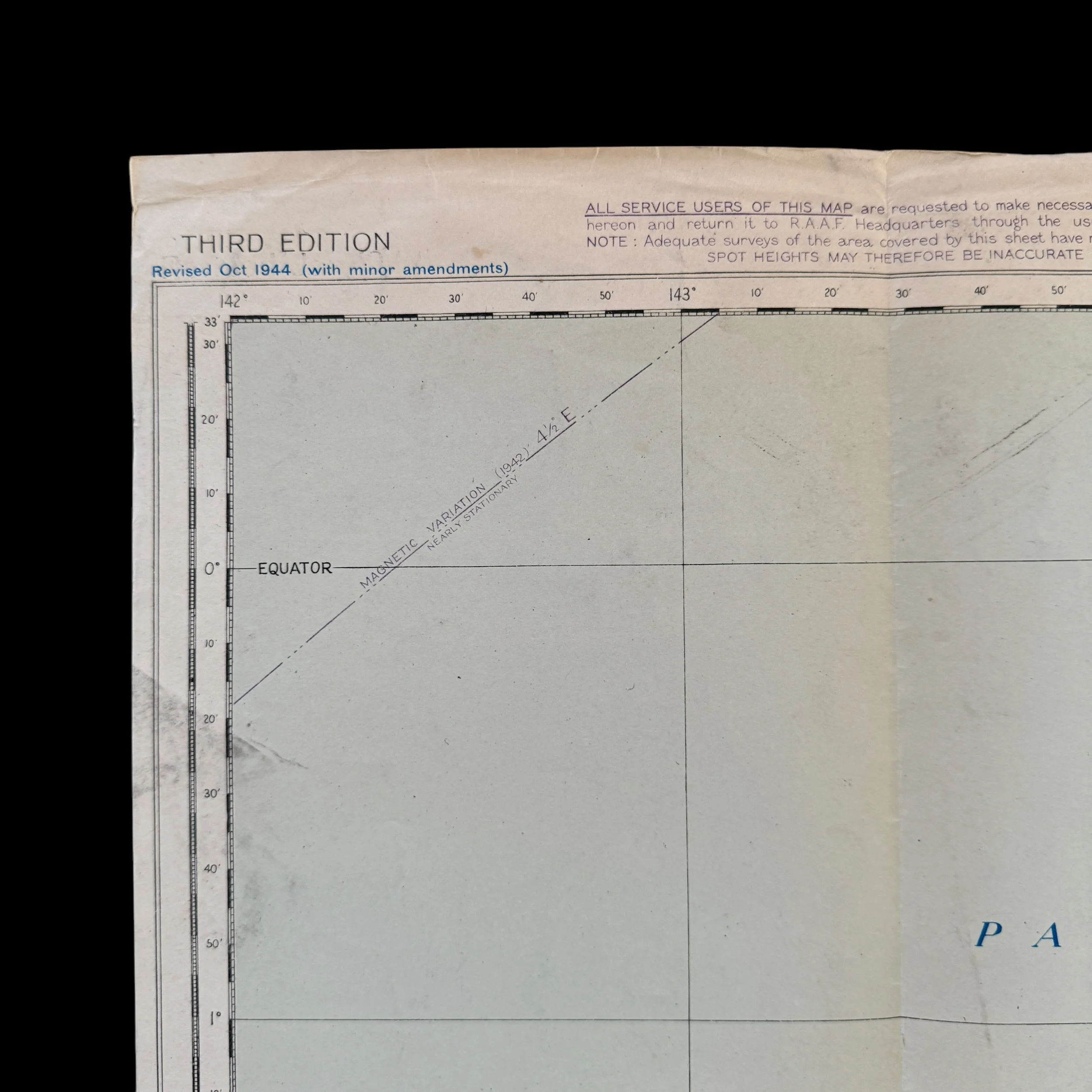
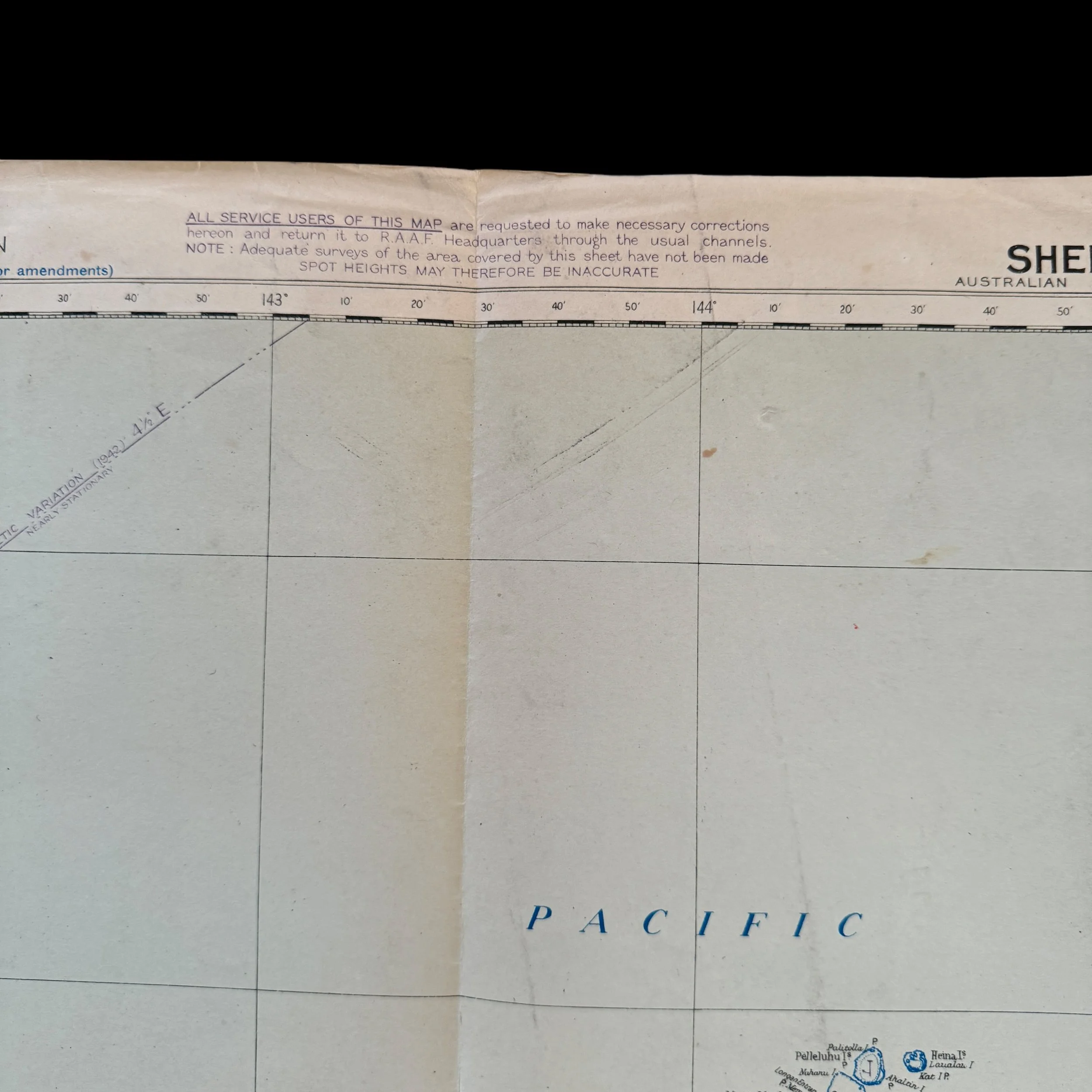
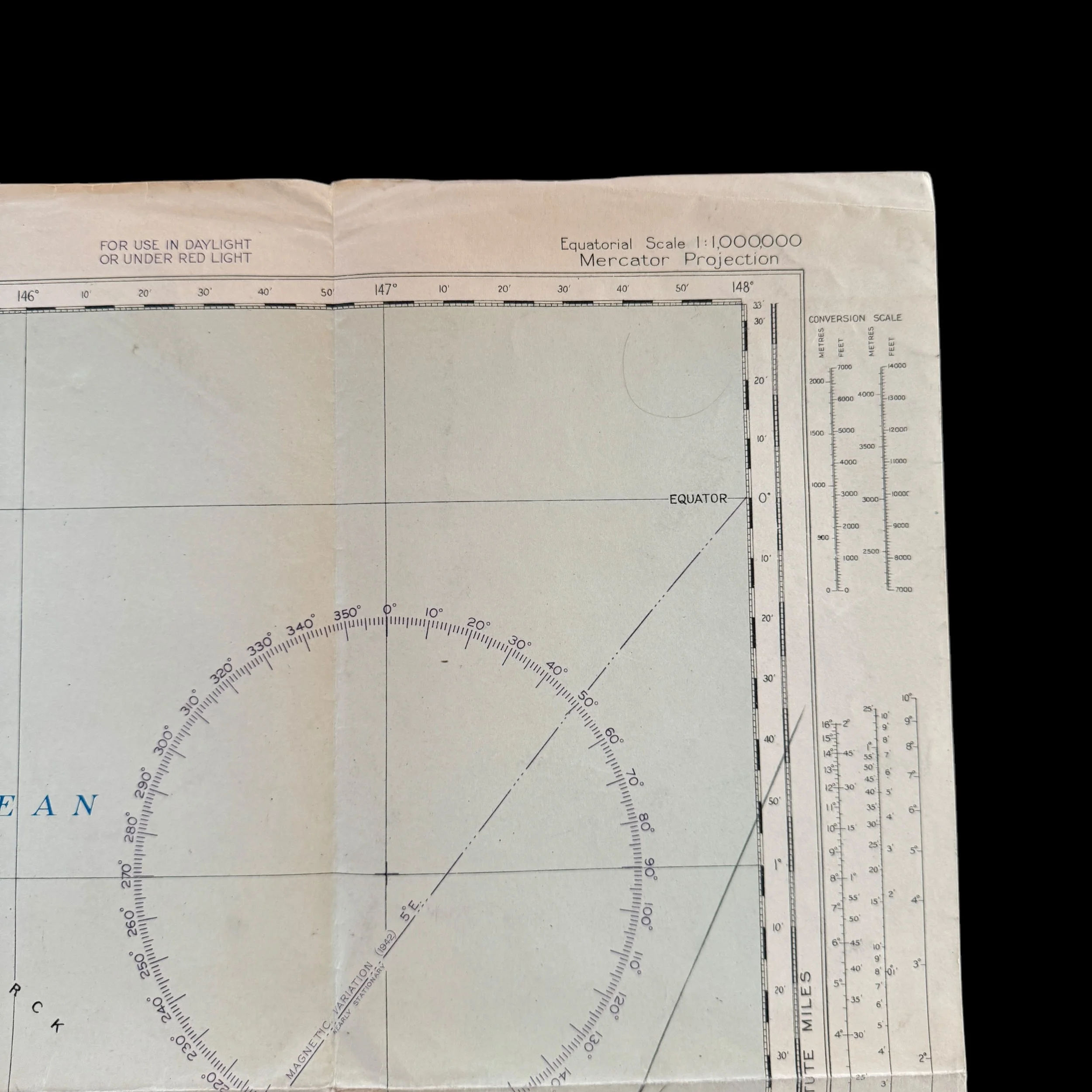

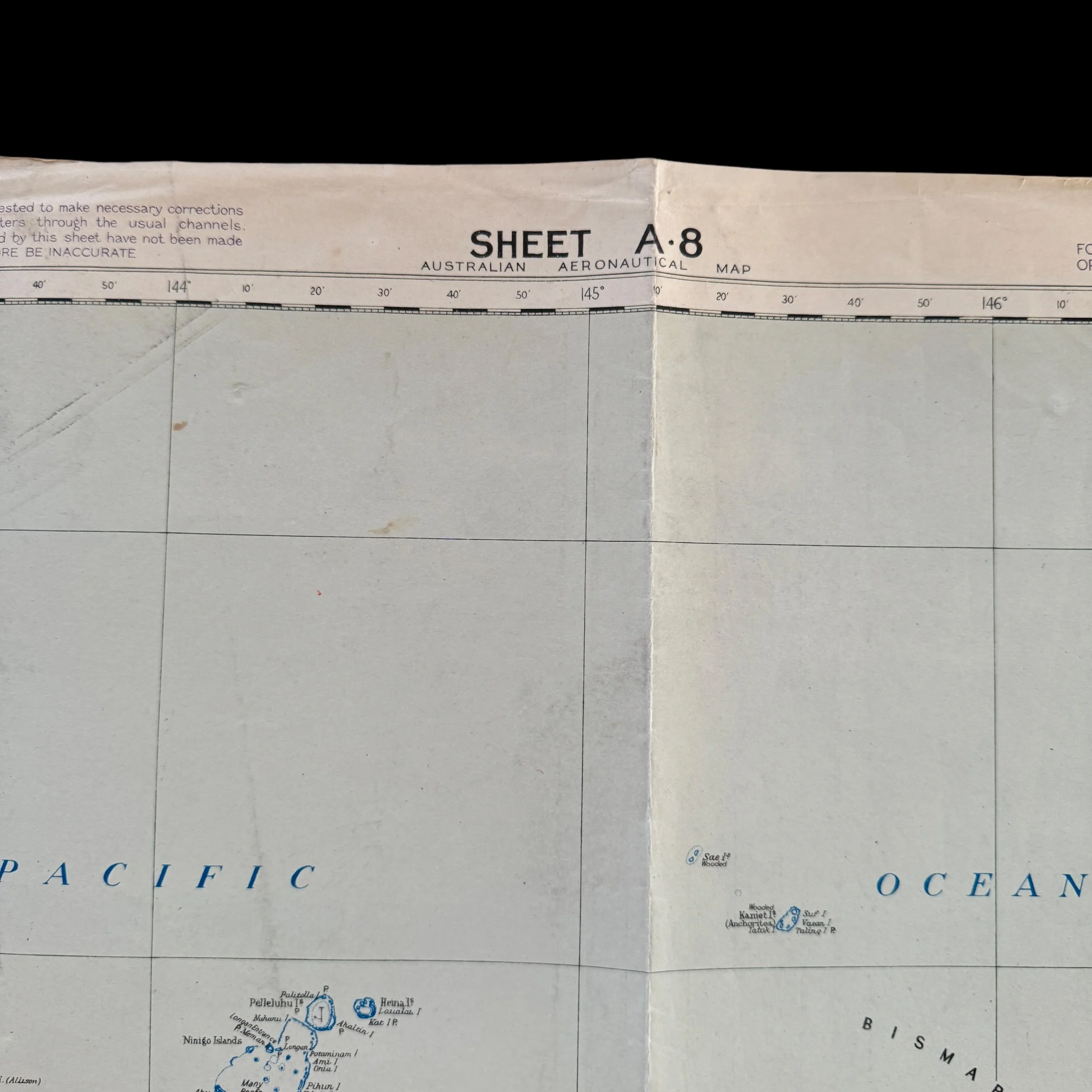
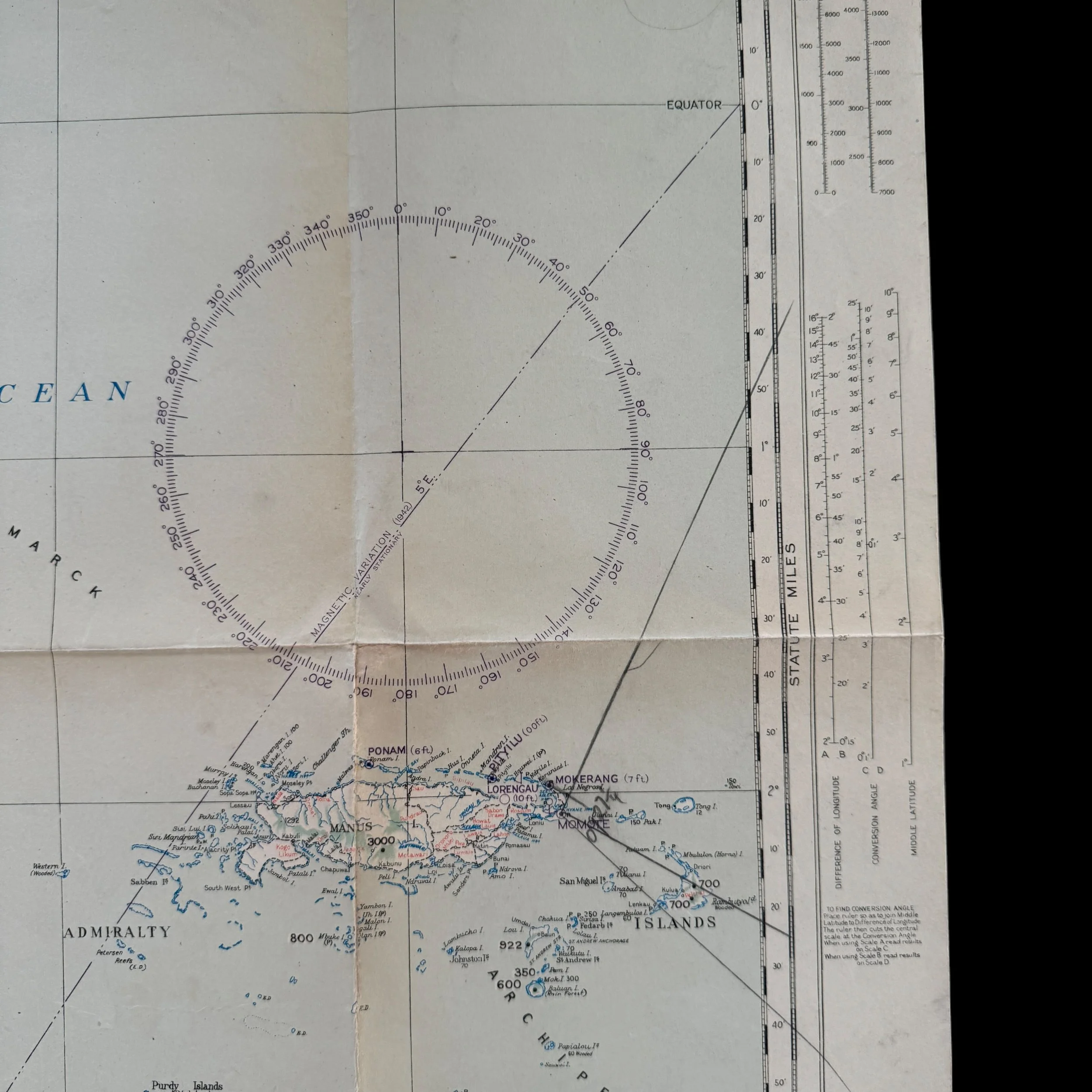
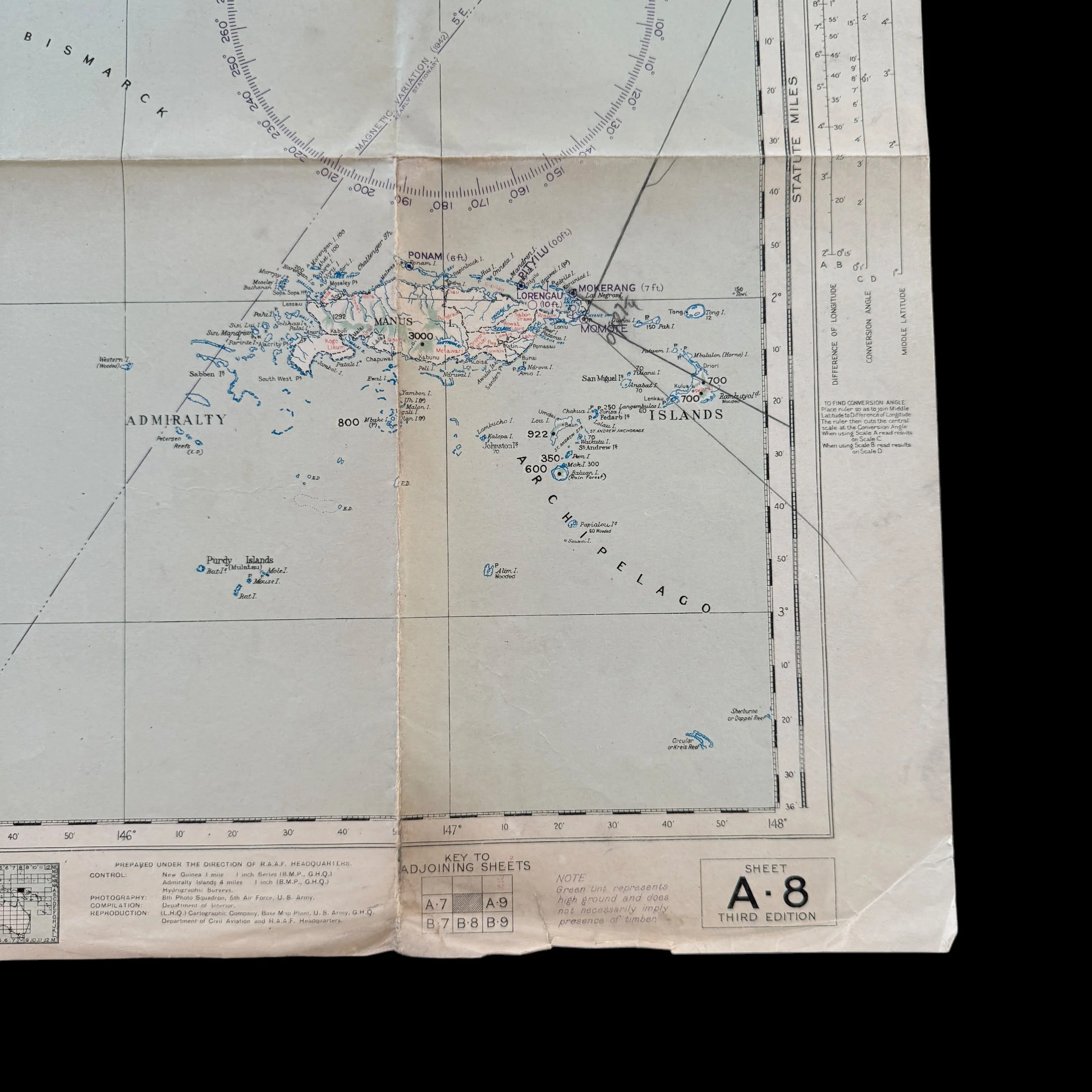
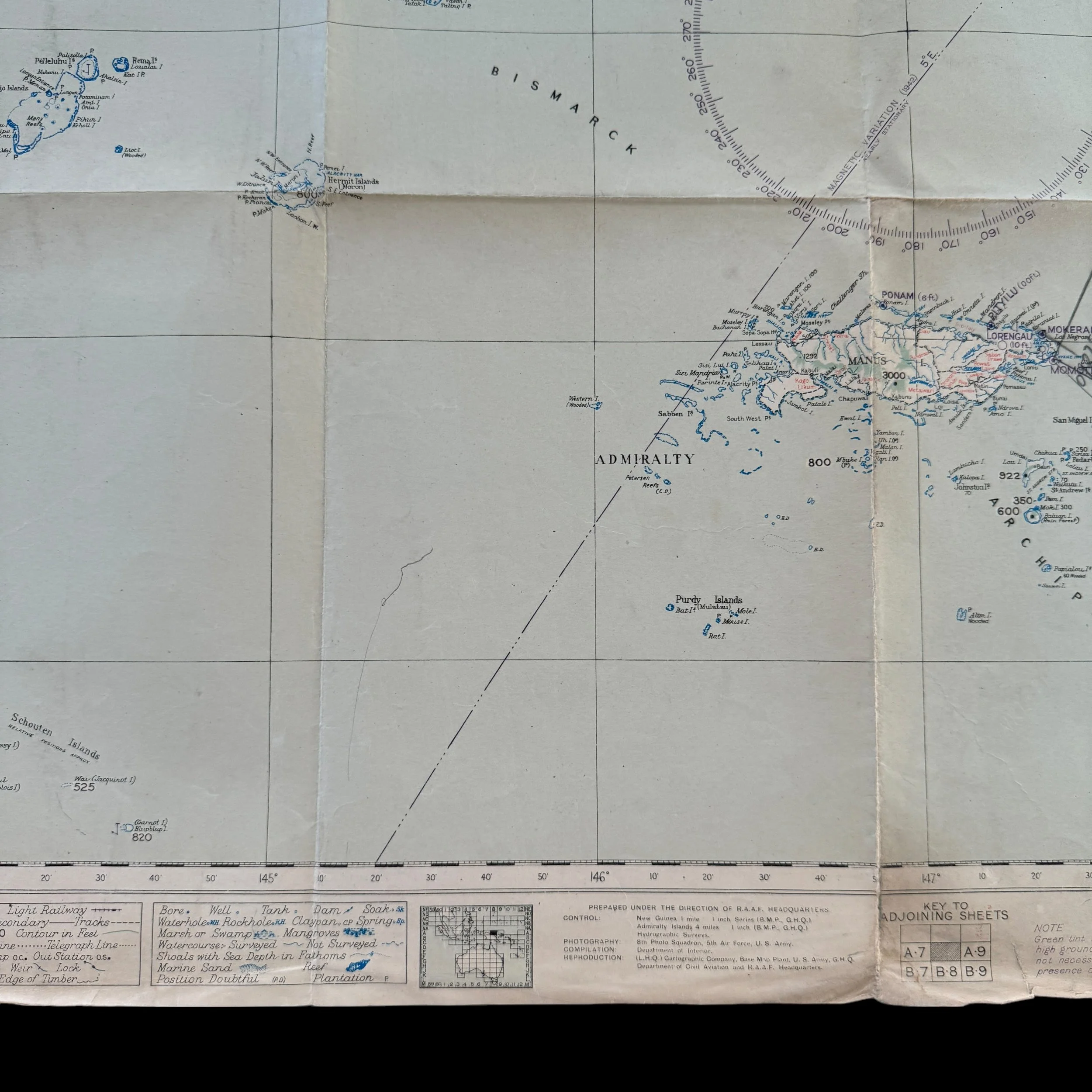
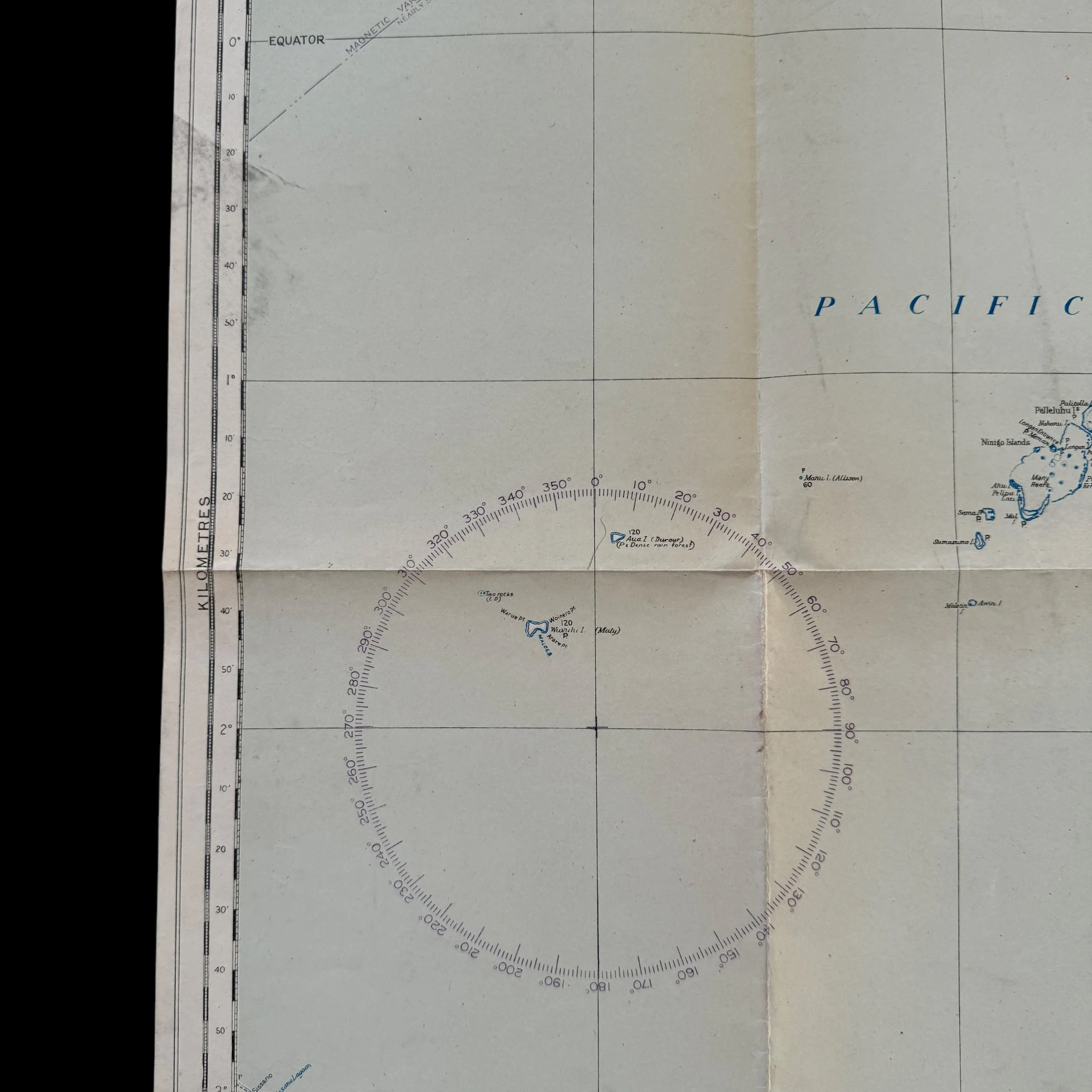
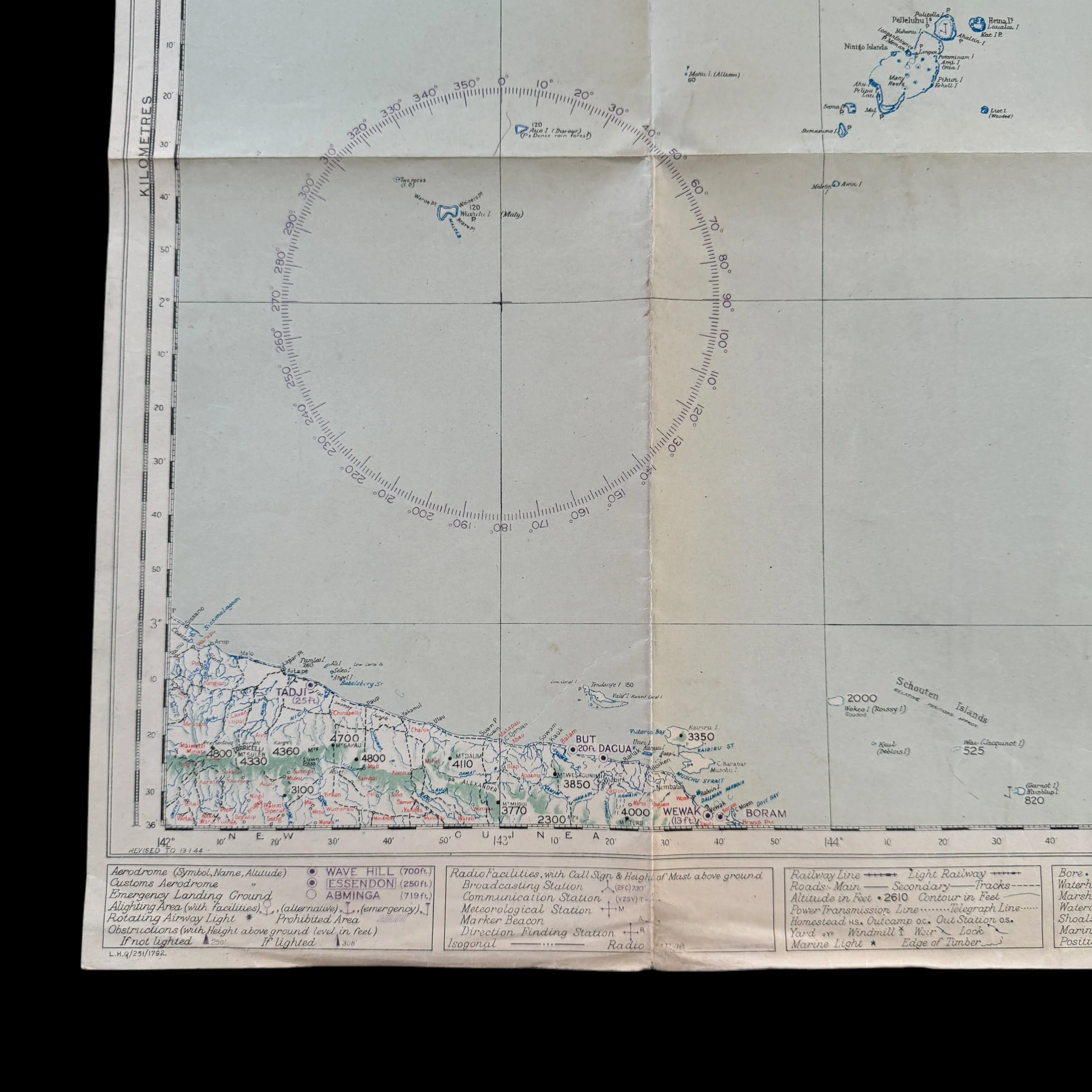
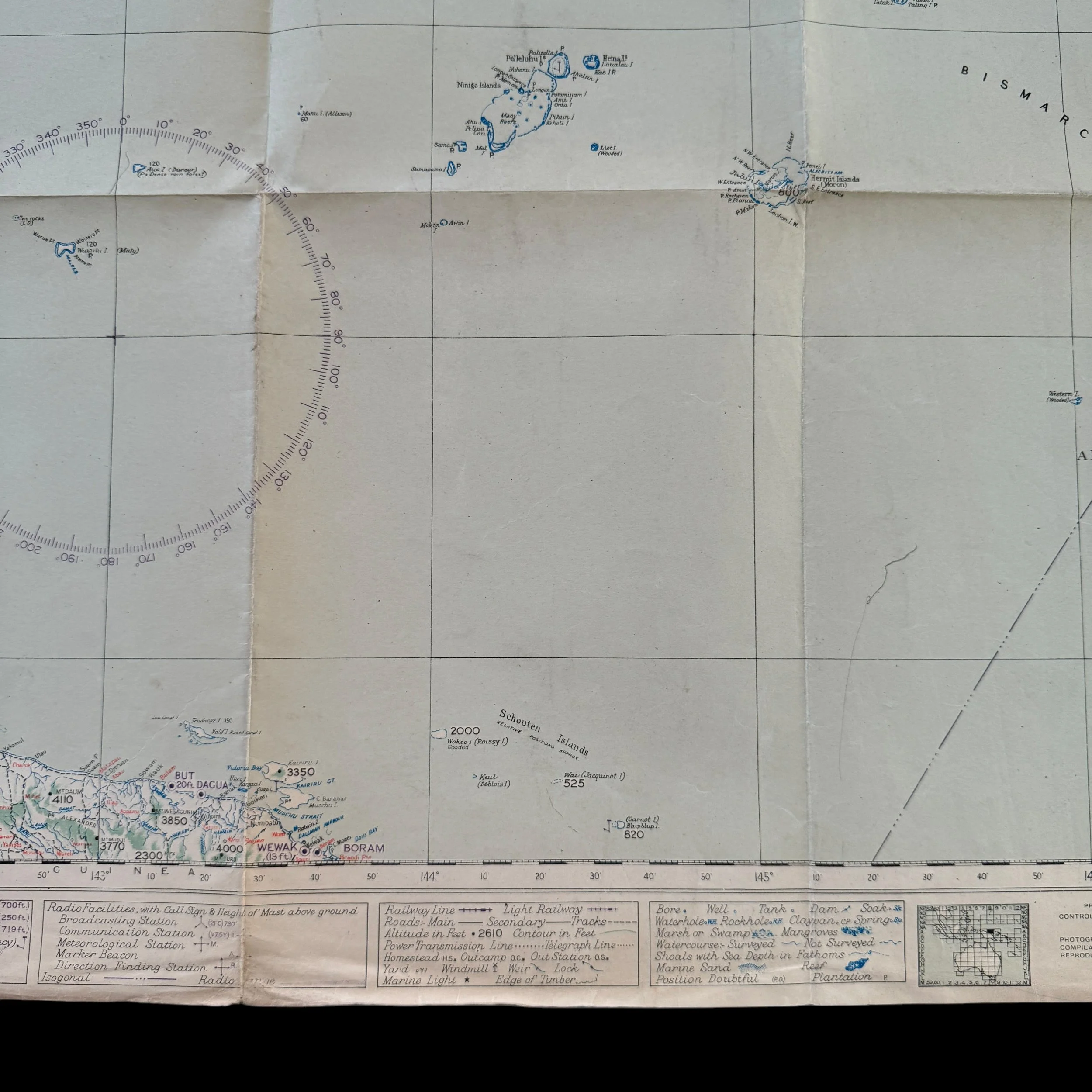
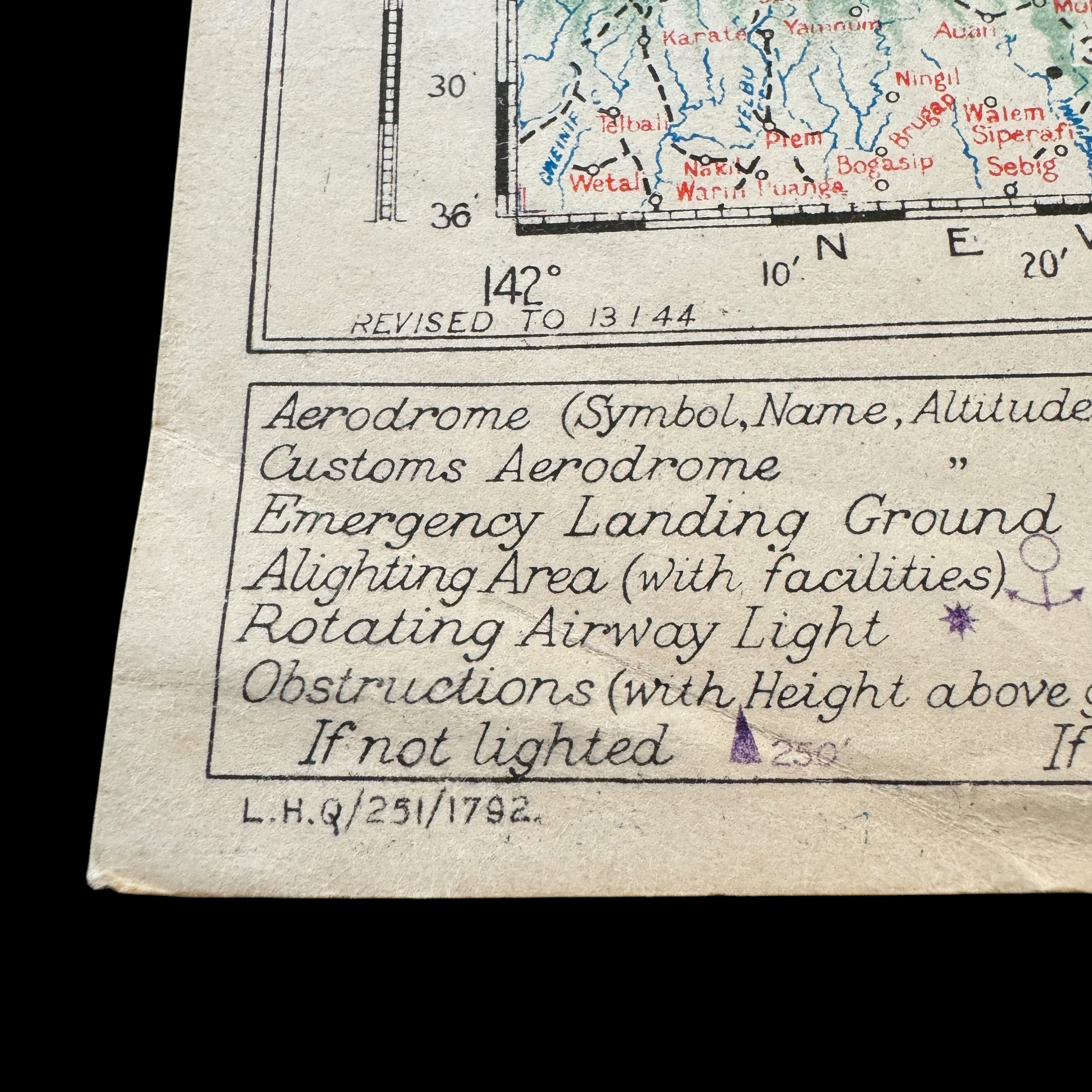
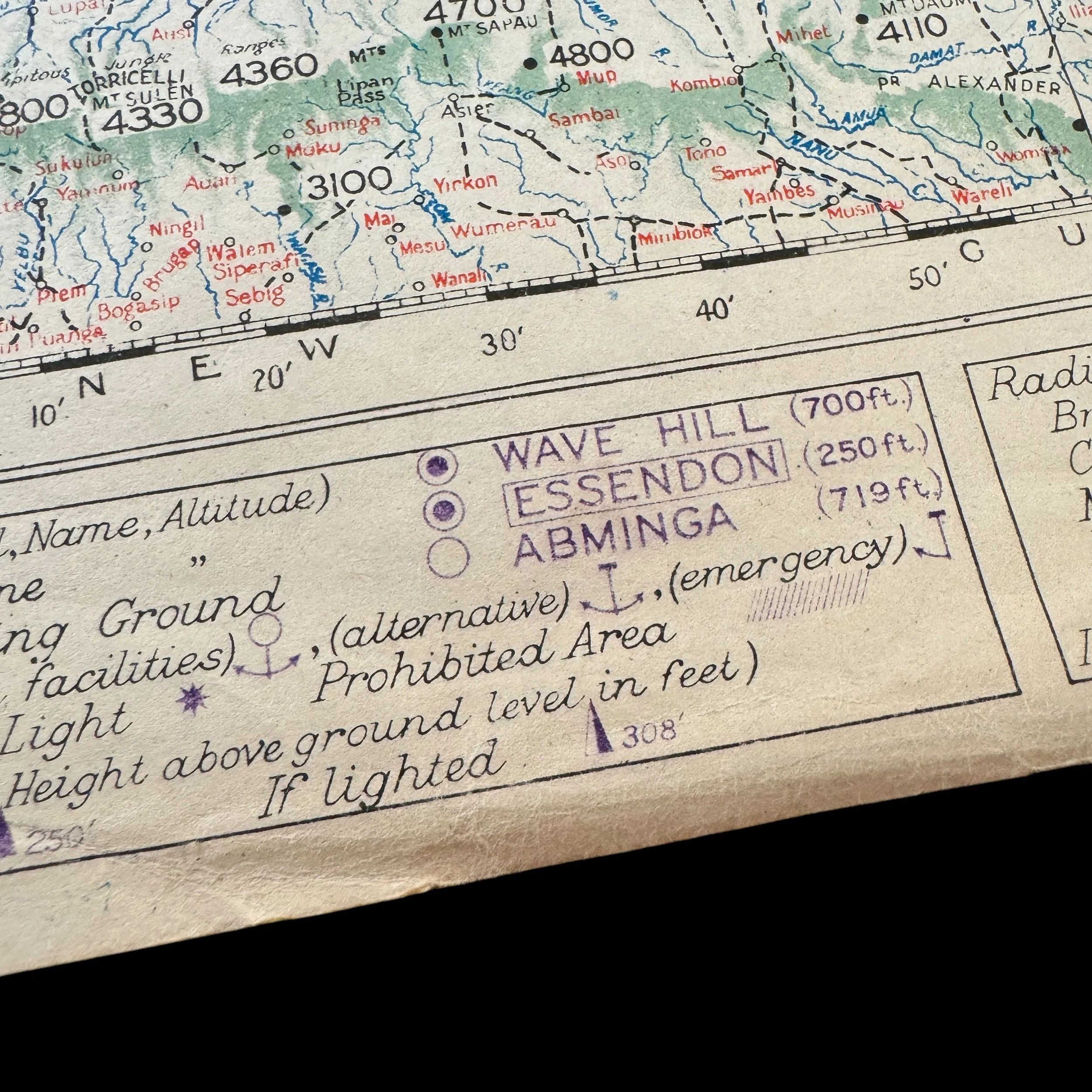
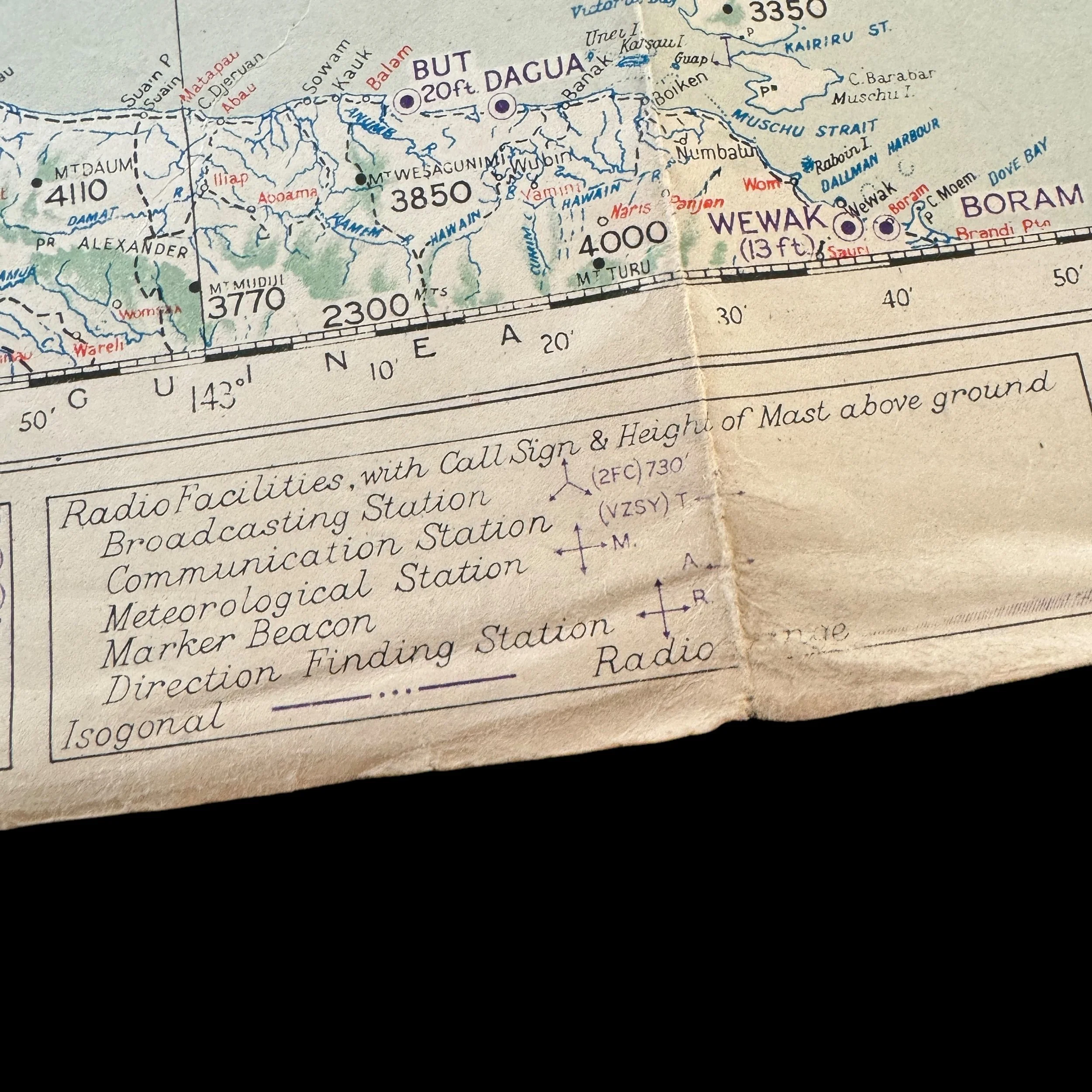
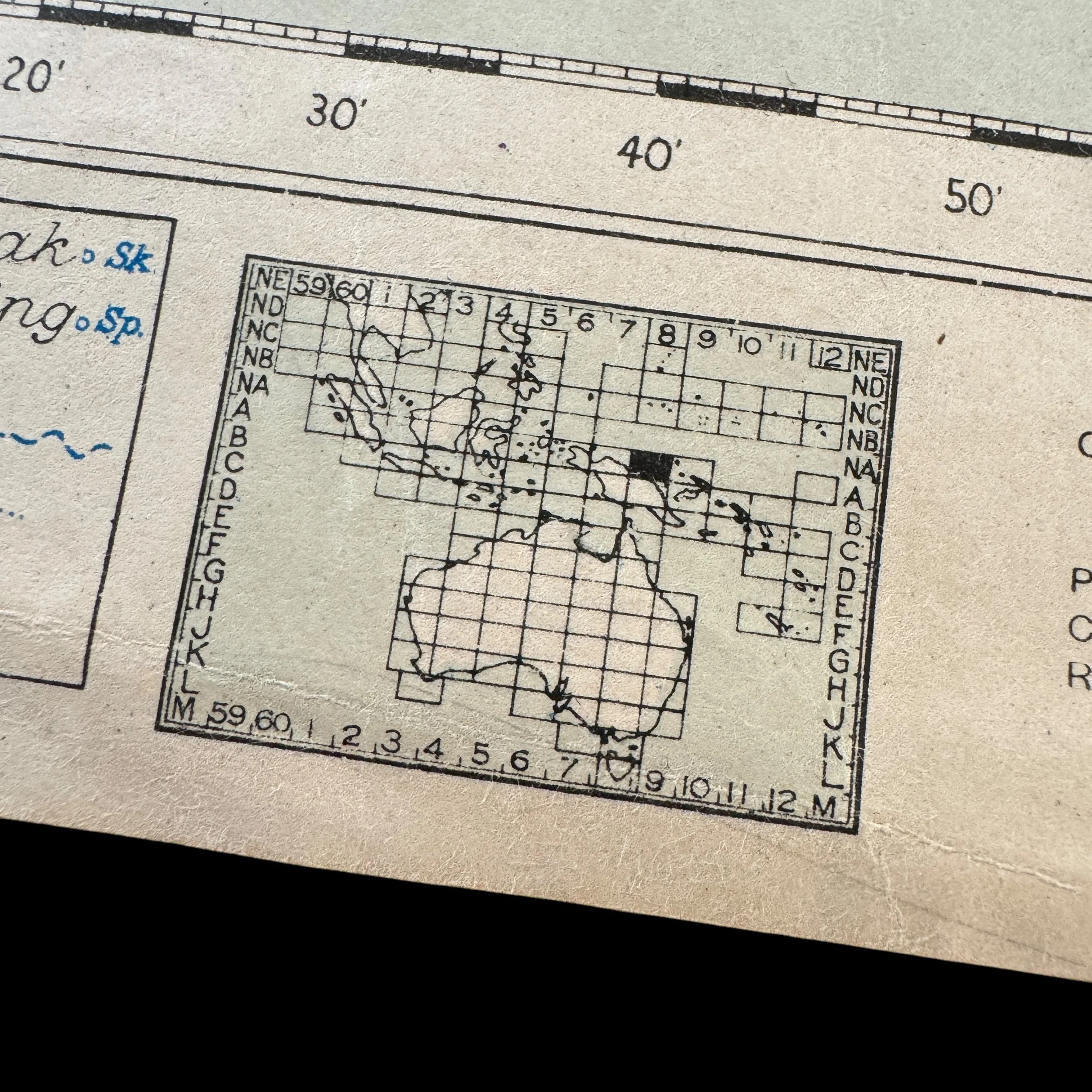
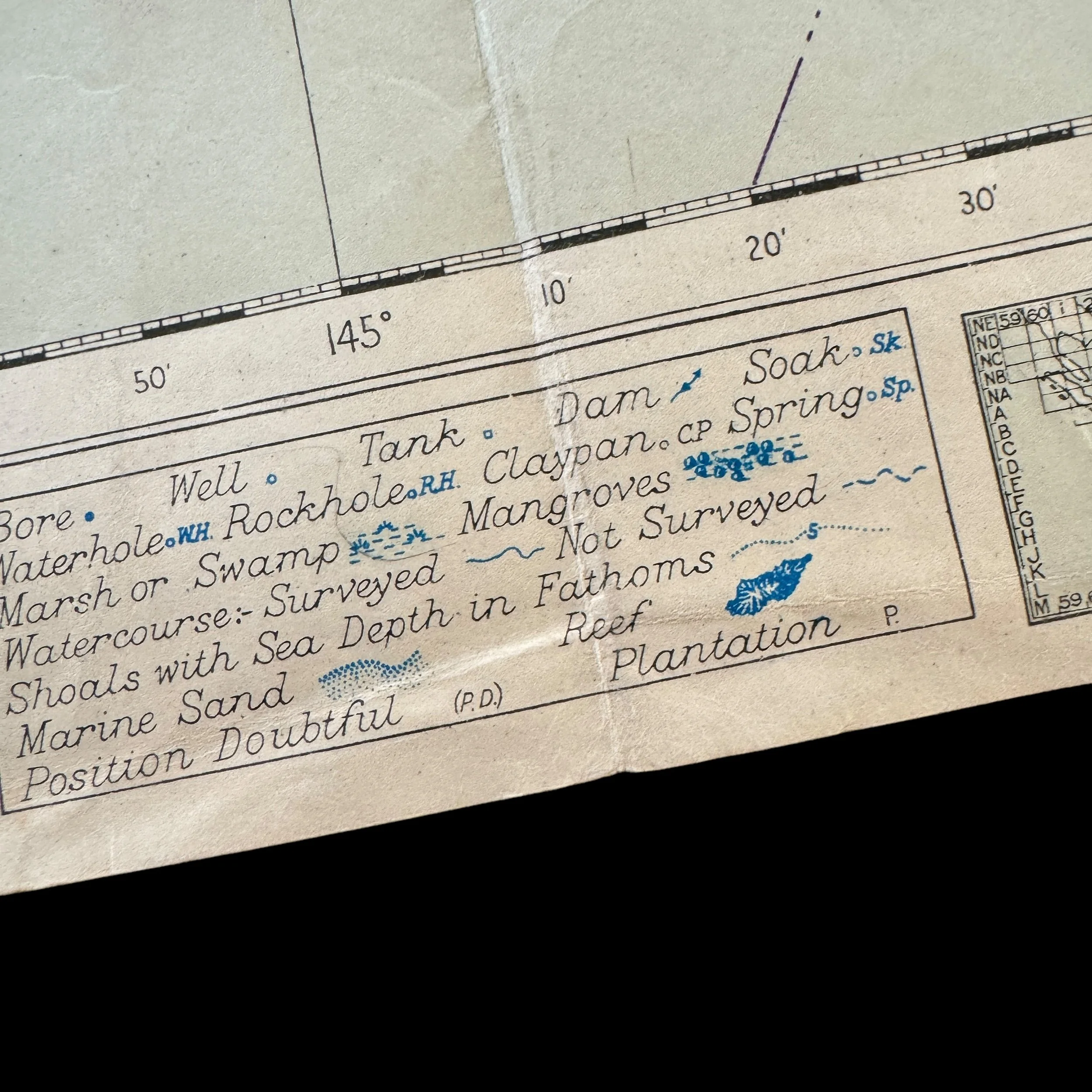
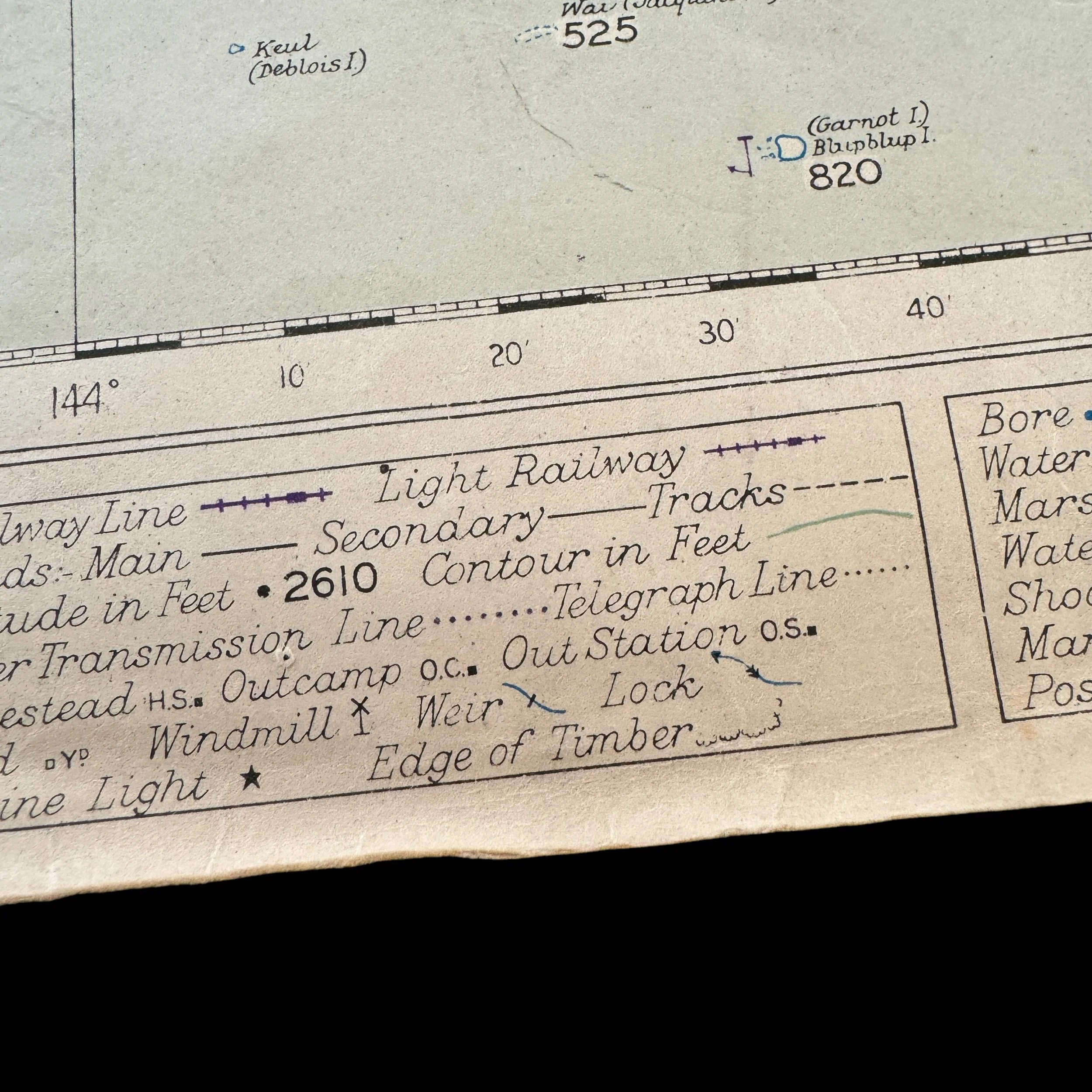
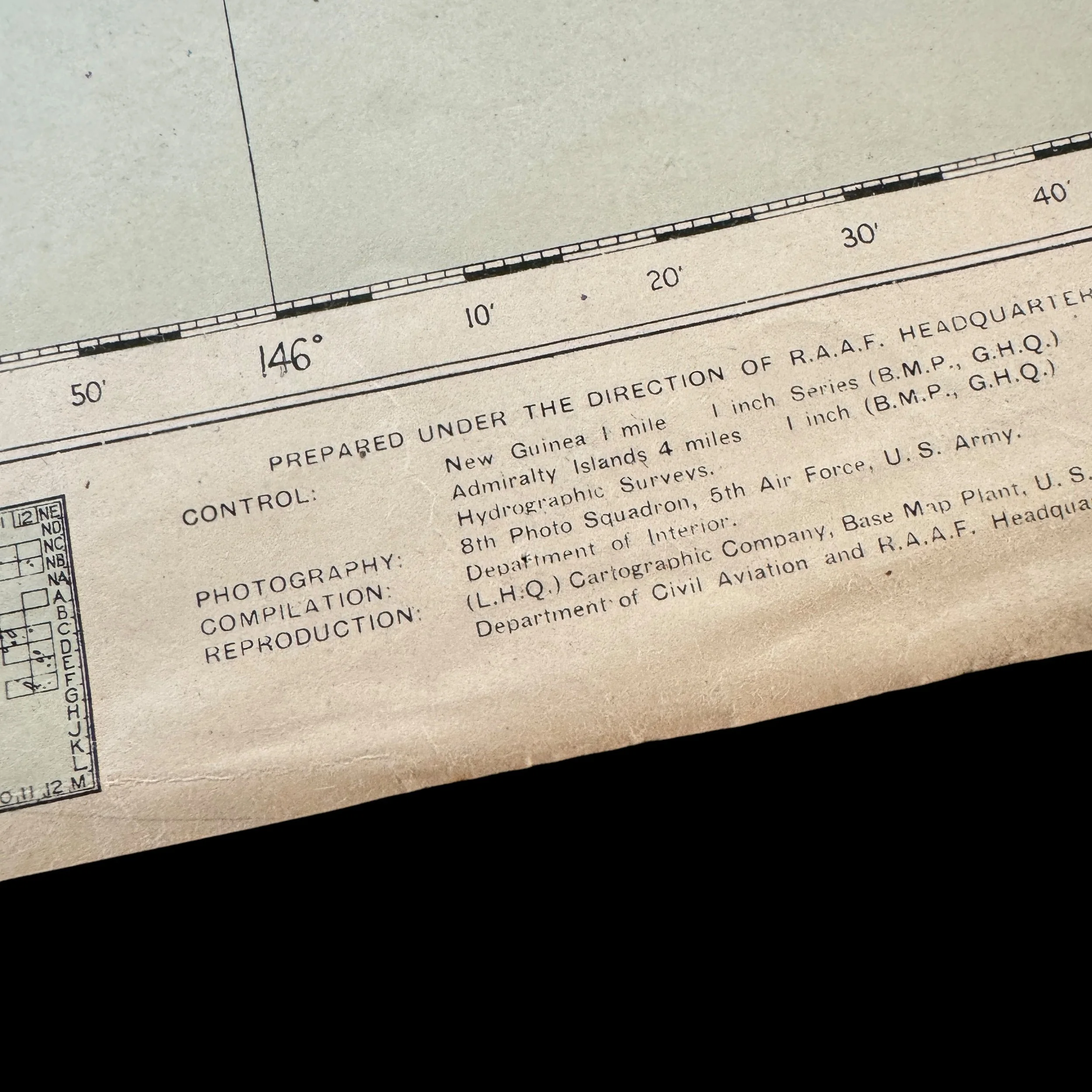

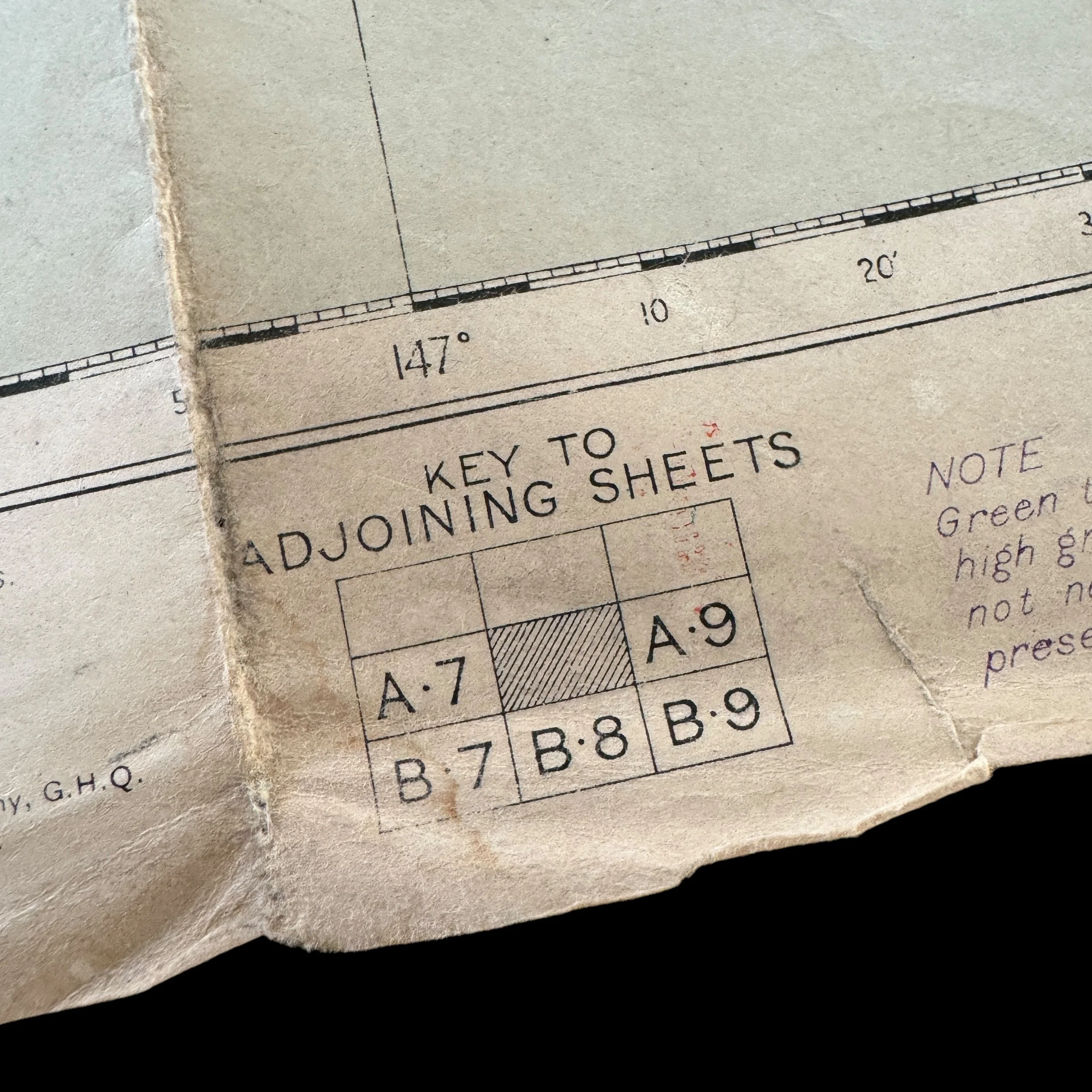
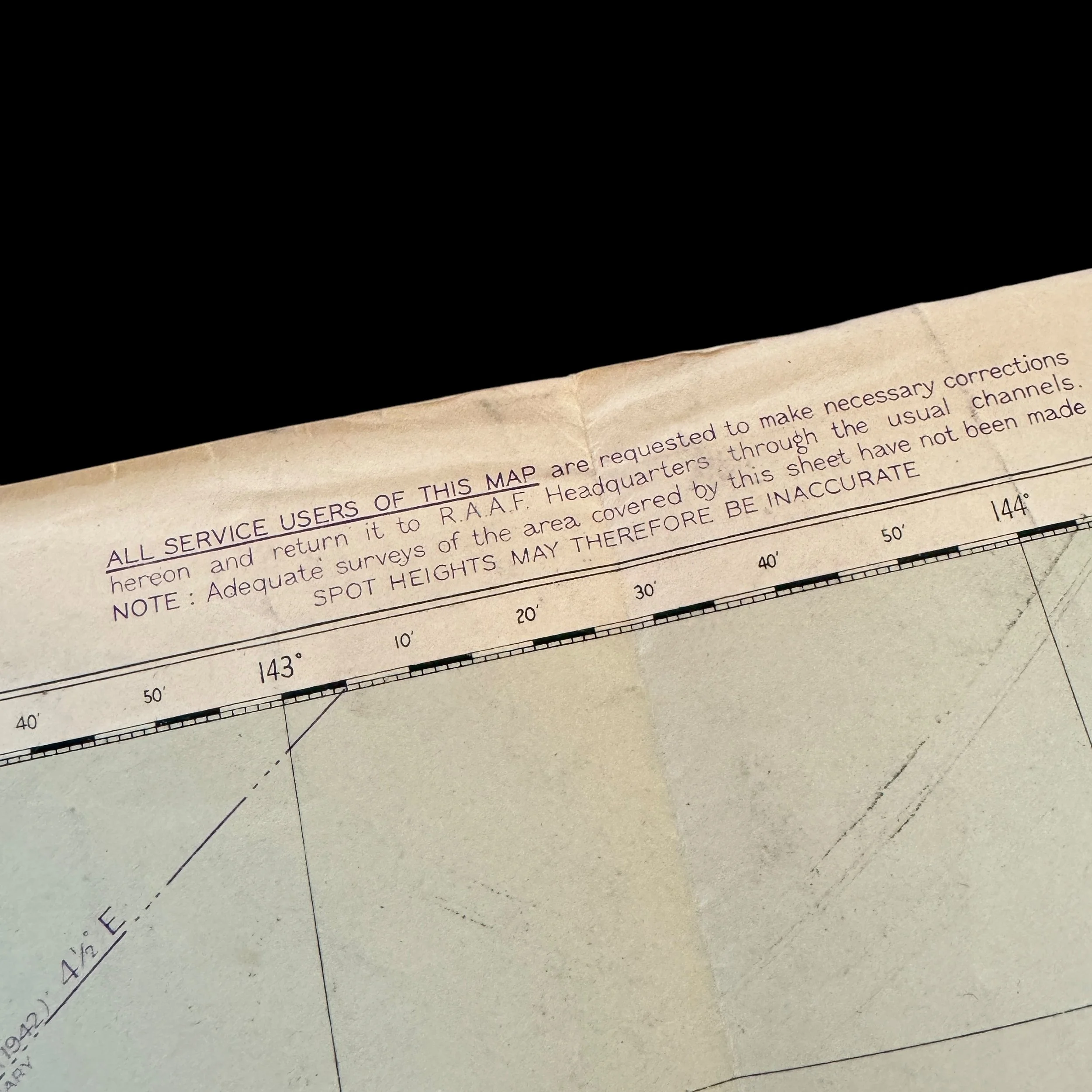
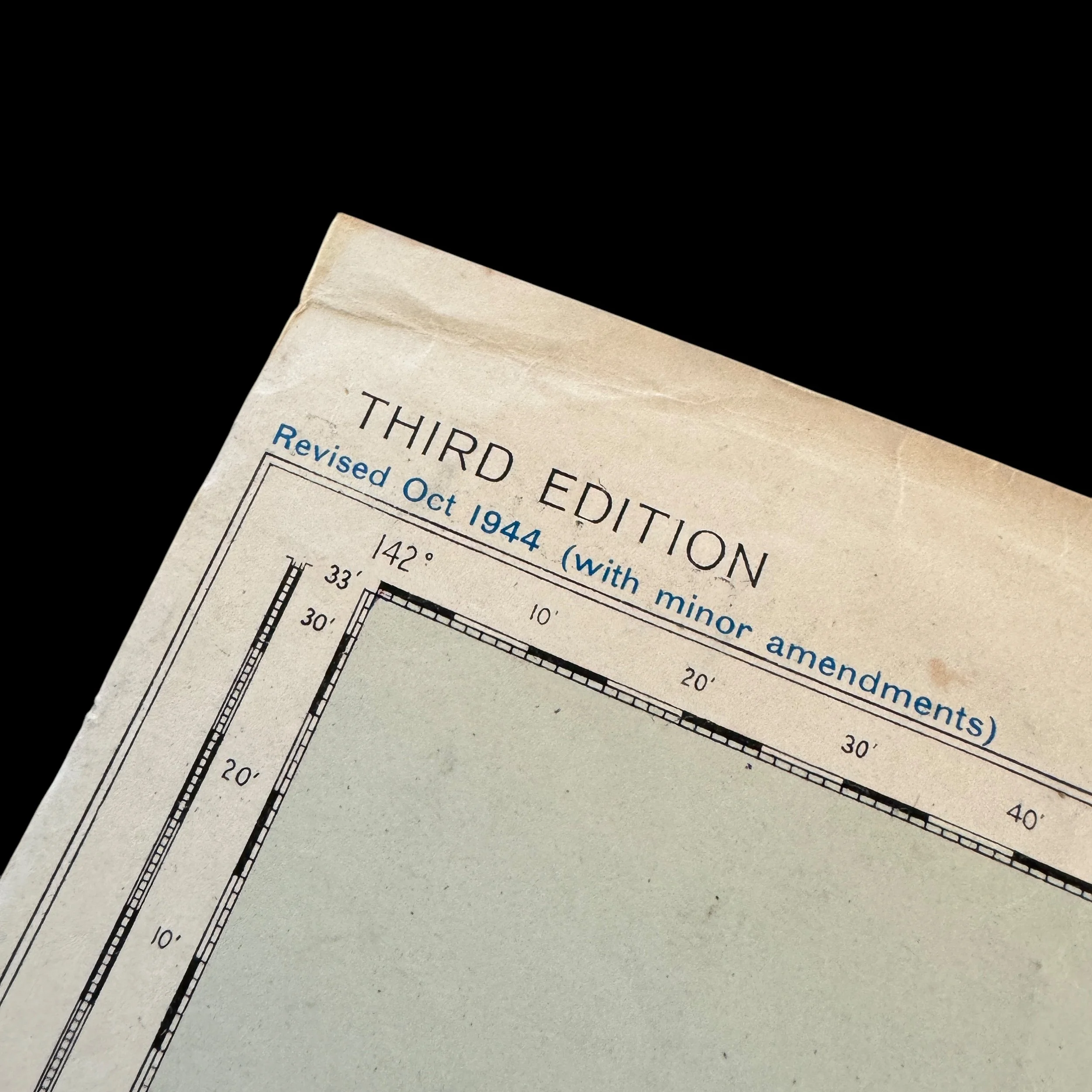
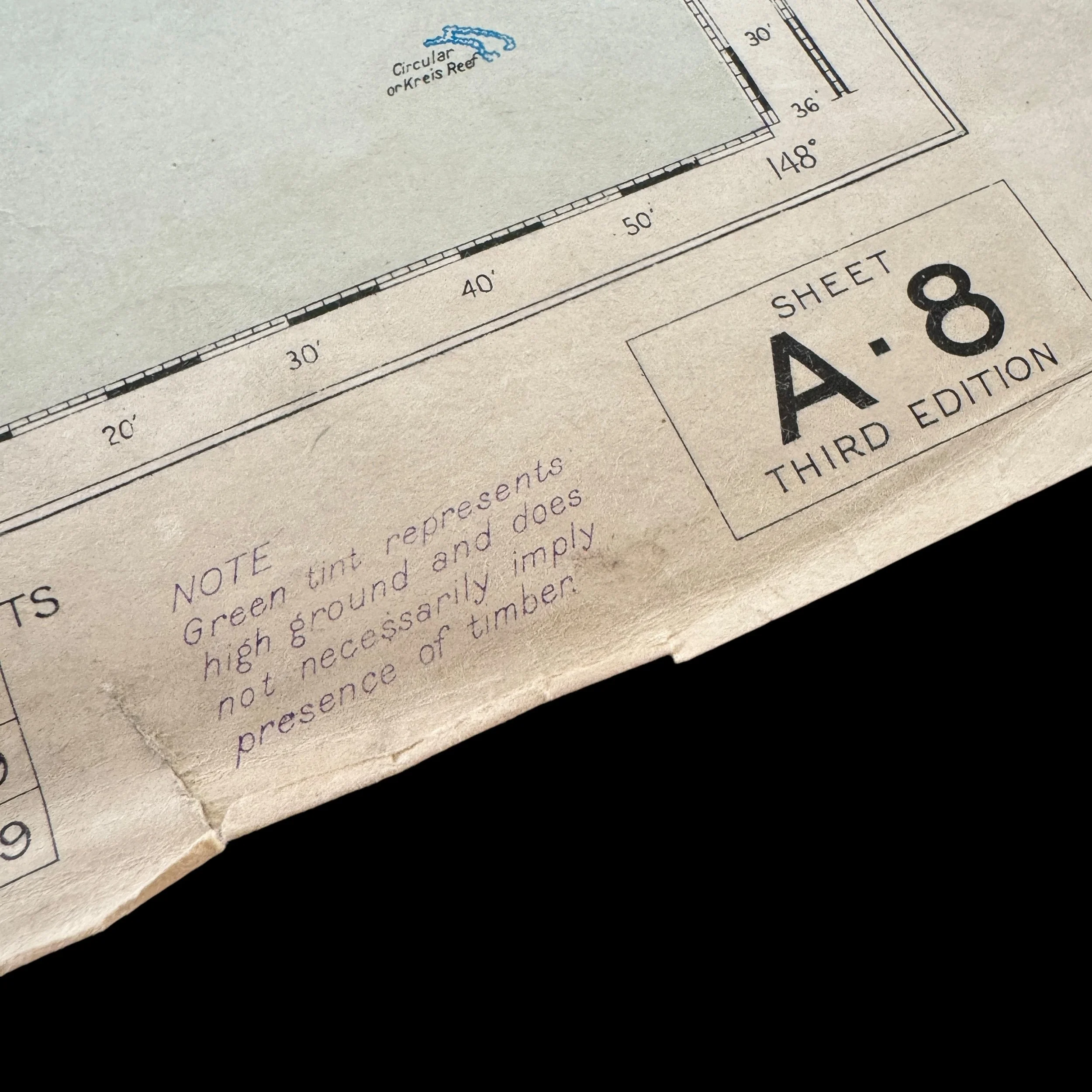

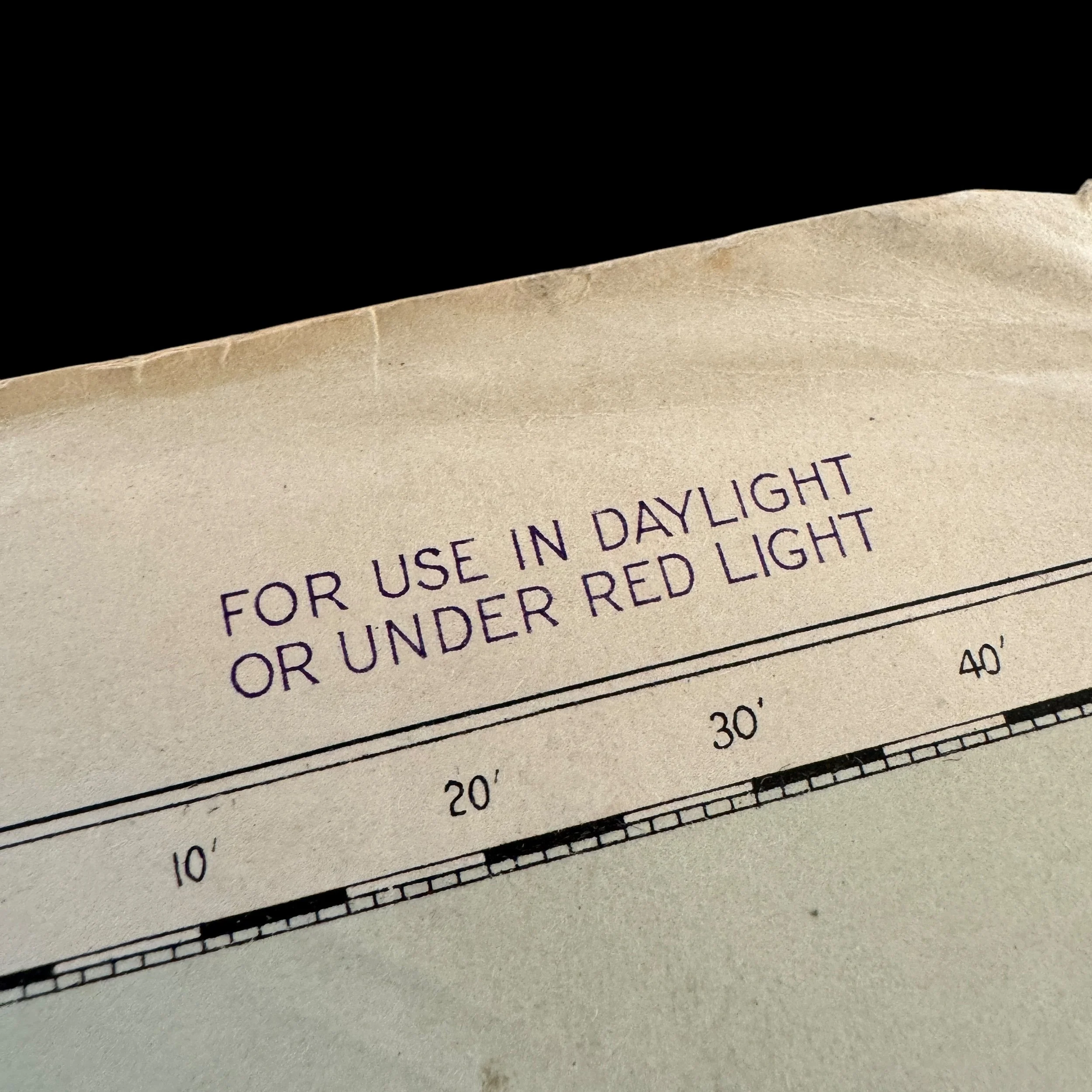
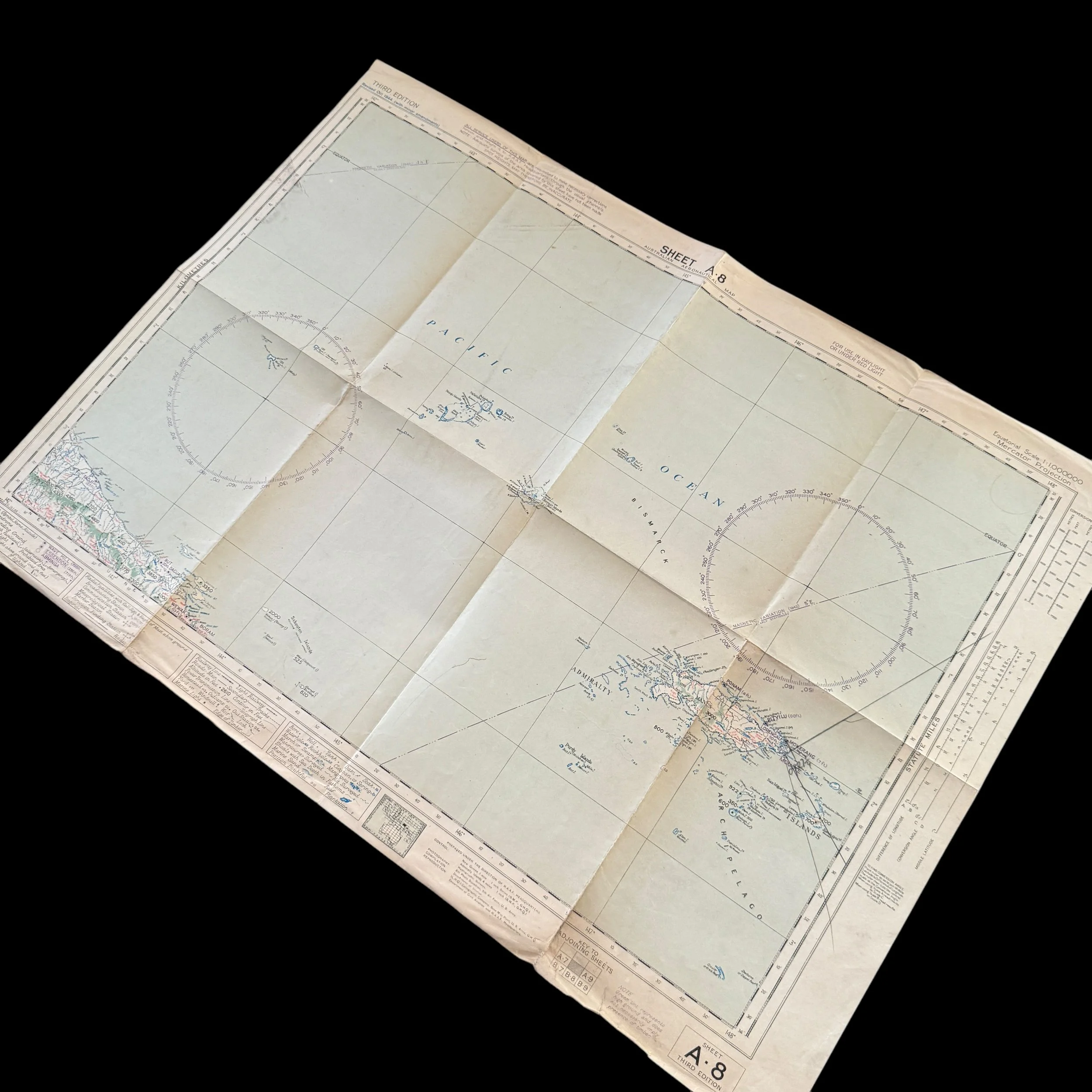







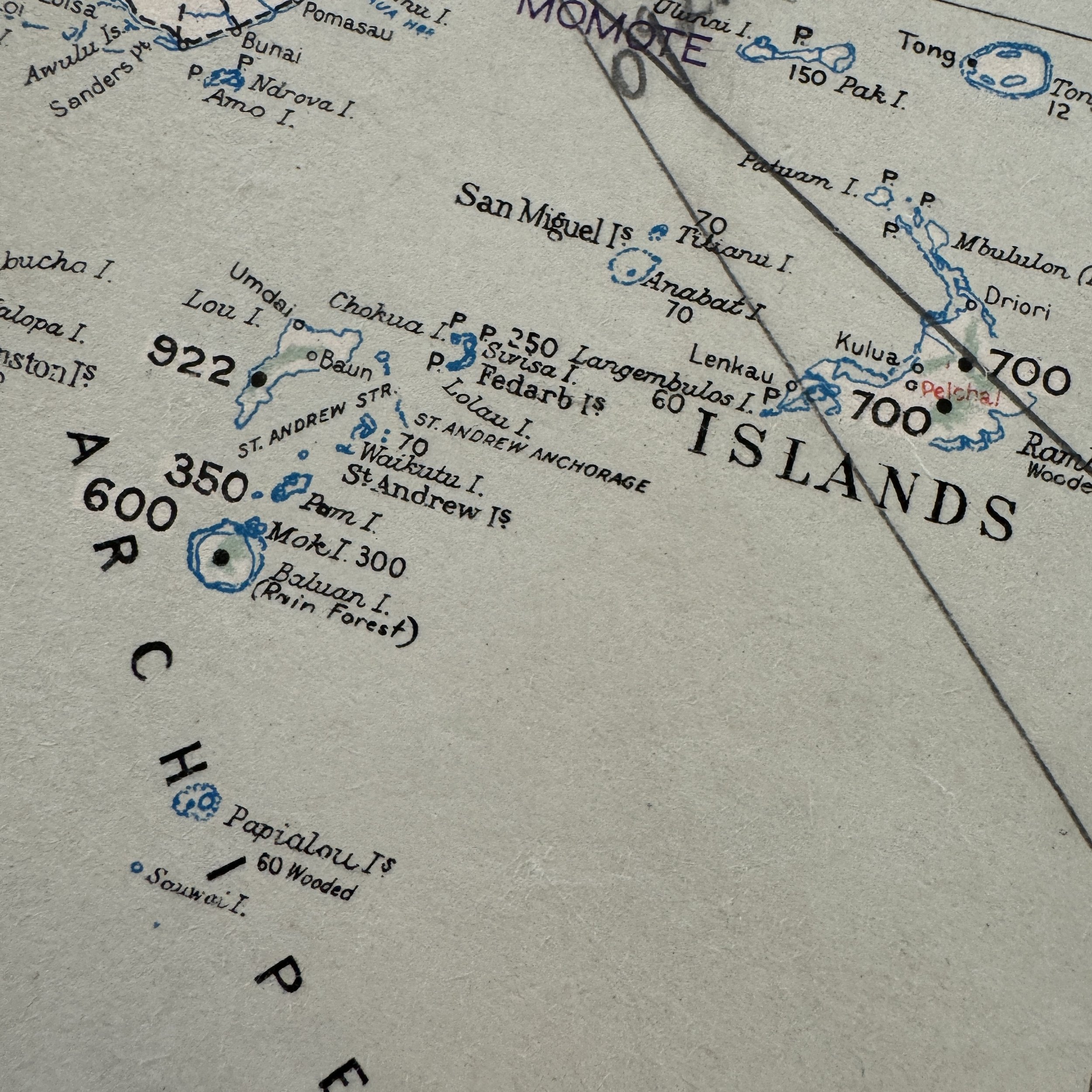

RARE! WWII 1944 U.S. 5th Air Force New Guinea & Admiralty Islands Campaign Combat Flight Navigation Map (Combat Marked)
Comes with hand-signed C.O.A. and a full historical write-up
Type: Original World War II U.S. Fifth Air Force Combat Flight Navigation Map
Campaign: Pacific Theater - New Guinea Campaign (1942 - 1945)
Date: October 1944
Size: 21.5 × 30 inches
This exceptionally rare and museum-grade World War II artifact is an original combat flight navigation map, dated October 1944, that was heavily used in battle by the U.S. Fifth Air Force during the New Guinea Campaign. This map played a crucial role in aerial operations designed to establish air superiority, provide ground support, and conduct strategic bombing missions against Japanese forces in the New Guinea and Admiralty Islands region.
The Fifth Air Force, serving as the aerial spearhead of General Douglas MacArthur’s island-hopping campaign, was instrumental in pushing Japanese forces out of New Guinea, the Bismarck Sea, and the Philippines between 1943 and 1945. The combat history embedded in this map reflects the intensity of the battles fought across the Pacific, as Allied forces sought to dismantle Japan’s entrenched military presence in key strongholds.
The map, produced by Land Headquarters under the South West Pacific Area Command, was a product of close collaboration between the U.S. Fifth Air Force and the Royal Australian Air Force. This partnership was essential in executing joint aerial operations against Japanese forces, combining American and Australian airpower to conduct coordinated strikes and reconnaissance missions. The Royal Australian Air Force, under the leadership of Air Vice-Marshal Bill Bostock, played a crucial role by providing air defense, reconnaissance, and logistical support, ensuring the success of major bombing missions. While there were internal tensions between RAAF Command and Air Force Headquarters in Melbourne, the collaboration with the U.S. Fifth Air Force remained highly effective, allowing for seamless coordination in one of the most complex and strategically significant campaigns of the Pacific War.
During the New Guinea Campaign, this navigation map would have been used to guide aircraft in executing critical bombing missions aimed at neutralizing Japanese air and naval power. The Fifth Air Force relied heavily on an array of bomber aircraft to deliver precision strikes against enemy strongholds across New Guinea, the Bismarck Archipelago, and the Solomon Islands. Among the most frequently used aircraft was the B-25 Mitchell, a medium bomber designed for low-altitude bombing and strafing runs, often equipped with forward-firing machine guns and skip-bombing capabilities to strike Japanese airfields, supply depots, and shipping convoys. The B-24 Liberator, with its long operational range and heavier bomb payload, was deployed for high-altitude strategic bombing, targeting major Japanese strongholds such as Rabaul and Wewak, which were crucial hubs for enemy reinforcements. The A-20 Havoc, a light attack bomber, provided tactical bombing and close air support, proving highly effective in low-level precision strikes against enemy fortifications and troop concentrations. These bombers operated under the protection of P-38 Lightning fighter escorts, which ensured air superiority by engaging Japanese aircraft in dogfights and defending Allied bombing formations.
This World War II artifact is a tangible link to the relentless air battles fought over the Pacific, reflecting the bravery and determination of the U.S. Fifth Air Force and its Royal Australian Air Force allies. It serves as a historic document of the strategic air campaign that helped cripple Japanese resistance, clear the way for Allied ground forces, and set the stage for the final push toward Japan. This navigation map is not only a testament to wartime ingenuity and coordination but also a once-in-a-lifetime piece of history, directly tied to one of the most decisive aerial operations of World War II.
The U.S. Fifth Air Force in the New Guinea Campaign and Admiralty Islands Operations (1944–1945): Securing Air Superiority in the Pacific
The U.S. Fifth Air Force played a crucial role in the Pacific Theater during World War II, particularly in the New Guinea Campaign and the operations around the Admiralty Islands from 1944 to 1945. As the primary air force under General Douglas MacArthur’s South West Pacific Area Command, the Fifth Air Force was responsible for securing air superiority, supporting ground operations, interdicting Japanese supply lines, and conducting strategic bombing missions. Throughout 1944 and into 1945, the Fifth Air Force executed an extensive aerial campaign across New Guinea and the Admiralty Islands, paving the way for the eventual Allied advance into the Philippines and beyond.
New Guinea was a key battleground in the Pacific War due to its geographical significance. It served as a critical stepping stone for the Allied island-hopping strategy aimed at bypassing heavily fortified Japanese positions while advancing toward Japan. Japanese forces had established numerous airfields and defensive positions throughout the island and the surrounding archipelagos, using them to launch air and naval attacks against Allied forces. The Admiralty Islands, located north of New Guinea, were equally vital as they controlled key sea lanes and housed strategically significant airstrips and harbors that could support further operations into the Philippines. To achieve the ultimate goal of liberating the Philippines and striking at the Japanese home islands, the Fifth Air Force had to neutralize enemy air power in New Guinea and the Admiralty Islands. This required an aggressive and sustained air campaign that involved dogfights, bombing raids, reconnaissance missions, and close air support for ground troops.
By early 1944, the Fifth Air Force had already established a dominant presence in New Guinea following successful campaigns in the previous year. The momentum of Allied victories continued as air units were deployed in full force to push the Japanese out of their remaining strongholds. One of the most significant battles in the New Guinea Campaign was the Battle of Hollandia, an amphibious assault designed to capture Japanese-controlled airfields and supply depots. The Fifth Air Force played a pivotal role in this battle by conducting pre-invasion bombing raids on Japanese defensive positions to weaken enemy fortifications, escorting transport and landing craft with fighter patrols to prevent Japanese air attacks, engaging Japanese aircraft in dogfights to secure air superiority over the landing zones, and providing close air support for ground troops as they advanced inland. Following the successful capture of Hollandia, the Allies secured several key airfields, which provided forward bases for sustained air operations against remaining Japanese positions in western New Guinea and the Admiralty Islands.
After securing Hollandia, the Fifth Air Force supported further operations against Biak Island and Noemfoor, both of which housed critical Japanese airfields. The Battle of Biak, fought between May and June 1944, saw intense aerial combat as Japanese forces attempted to resist Allied landings. The Fifth Air Force was instrumental in destroying Japanese aircraft before they could be used against American and Australian troops. The capture of Noemfoor in July 1944 allowed the Allies to construct additional airfields that brought them closer to the Philippines. These newly secured bases provided a staging ground for heavy bombers like the B-24 Liberator, which could now reach enemy positions with greater efficiency.
The Admiralty Islands, located north of New Guinea, became the next focus of Allied air operations. The Japanese had fortified several islands in the group, using them as bases for aircraft, naval operations, and logistical support. Controlling the Admiralties was essential for cutting off enemy supply lines and securing a forward base for future operations. The battle for Los Negros, the largest island in the Admiralties, marked the beginning of the campaign. The Fifth Air Force played a critical role by conducting low-level bombing and strafing runs against Japanese defensive positions, deploying paratroopers and reinforcements to secure key locations, providing fighter cover to protect transport aircraft and naval landing operations, and suppressing Japanese counterattacks by striking artillery positions and bunkers hidden in the jungle. The capture of Momote Airfield on Los Negros was a turning point, as it allowed the Allies to quickly repair and use the airstrip for their own operations. The Fifth Air Force wasted no time in launching further strikes against the remaining Japanese garrisons in the Admiralty Islands.
Manus Island, the largest in the Admiralty chain, was the final objective. Once again, the Fifth Air Force led the aerial offensive by bombing enemy fortifications and supply depots ahead of the amphibious landings, conducting reconnaissance missions to locate hidden enemy strongpoints, using B-25 Mitchell bombers for precise attacks on Japanese infrastructure, and engaging enemy aircraft attempting to reinforce their positions. With the successful capture of Manus, the Allies established a major naval and air base that would serve as a launch point for operations against the Philippines. The newly constructed Seeadler Harbor became one of the largest naval bases in the Pacific, capable of supporting aircraft carriers, battleships, and long-range bombers.
Following the successful capture of New Guinea and the Admiralty Islands, the Fifth Air Force focused on maintaining air superiority and launching strategic bombing missions against the Japanese. By mid-1944, the Fifth Air Force had successfully destroyed a large portion of Japan’s air fleet in the region. This was achieved through relentless bombing campaigns on Japanese airfields, fighter sweeps to eliminate enemy aircraft in the air and on the ground, and interdiction missions targeting fuel supplies and ammunition depots. As a result, Japanese forces in the region were left with little to no air support, making it easier for the Allies to conduct further operations without the threat of enemy air attacks.
With New Guinea and the Admiralty Islands secured, the Fifth Air Force turned its attention to supporting MacArthur’s return to the Philippines. Throughout late 1944 and early 1945, the air force bombed enemy positions on Mindoro and Leyte to weaken Japanese defenses, escorted convoys and landing craft to prevent attacks from remaining Japanese aircraft, and destroyed enemy shipping attempting to reinforce Philippine garrisons. The Fifth Air Force’s operations in New Guinea and the Admiralty Islands from 1944 to 1945 were essential in securing Allied dominance in the South West Pacific. By achieving air superiority, supporting ground operations, and disrupting Japanese supply lines, the Fifth Air Force helped pave the way for the liberation of the Philippines and the eventual advance toward Japan. The campaign demonstrated the critical role of air power in modern warfare, highlighting the effectiveness of coordinated aerial assaults, strategic bombing, and close air support in securing victory. The Fifth Air Force’s relentless operations significantly weakened Japan’s ability to resist, bringing the Pacific War closer to its final phase.
19th Bombardment Group
22nd Bombardment Group
2d Combat Cargo Group
312th Bombardment Group
317th Troop Carrier Group
345th Bombardment Group
348th Fighter Group
35th Fighter Group
374th Troop Carrier Group
375th Troop Carrier Group
380th Bombardment Group
38th Bombardment Group
3rd Air Commando Group
3rd Bombardment Group
417th Bombardment Group
433rd Troop Carrier Group
43rd Bombardment Group
475th Fighter Group
49th Fighter Group
54th Troop Carrier Wing
58th Fighter Group
6th Reconnaissance Group
71st Reconnaissance Group
85th Fighter Wing
86th Fighter Wing
8th Fighter Group
90th Bombardment Group
91st Reconnaissance Wing
V Bomber Command
V Fighter Command